TCL MQLED85, or model C765, is a television that can really surprise, especially in this price range. It is one of the cheapest models with mini-LED technology, which is immediately evident in the picture quality. The blacks are deep, and the brightness is sufficient even in a brightly lit room. With a large number of dimming zones, watching movies in the evening is a pleasure – the blacks are truly deep, and the image in dark scenes looks clear. However, it is not perfect – in some shots, minor issues can be noticed with small bright elements, but this is really a minor detail compared to what this model offers. Google TV works wonderfully here – there are plenty of apps, and using the system is simply convenient. Voice control in Polish works flawlessly, which can be particularly useful if you don’t want to type in movie titles using the remote. Of course, there are minor shortcomings, such as the lack of recording, but these are not things that hinder day-to-day use. For gamers, it is also a great option. HDMI 2.1 support, VRR, and low input lag mean that the television handles consoles well and competes without issues with more expensive models from Korean or Japanese manufacturers. In this price range, it is hard to find something better when it comes to smooth and responsive gameplay. During testing, we encountered a few minor software issues, but it’s hard to say if that’s a serious downside. We hope that TCL will release updates, so there is a chance that this issue will be quickly addressed. TCL MQLED85/C765 is an excellent choice if we are looking for a television with good picture quality and modern features at a reasonable price. It is a model that combines affordable mini-LED technology with a user-friendly Google TV system and also performs excellently in gaming. Minor software shortcomings are something one can live with, especially considering what this television offers in its class.
- Matching (Score)
- Our verdict
- TV appearance
- Where to buy
- Contrast and black detail
- HDR effect quality
- Factory color reproduction
- Color reproduction after calibration
- Smoothness of tonal transitions
- Image scaling and smoothness of tonal transitions
- Blur and motion smoothness
- Console compatibility and gaming features
- Input lag
- Compatibility with PC
- Viewing angles
- TV efficiency during daytime
- Details about the matrix
- TV features
- Apps
- Playing files from USB
- Sound
TCL MQLED85 / C765 vs TCL C7K / QM7K 55"-85"
Direct compare
C765 / MQLED85
C7K / Q7C / MQLED85K / C79K / C71K / QM7K

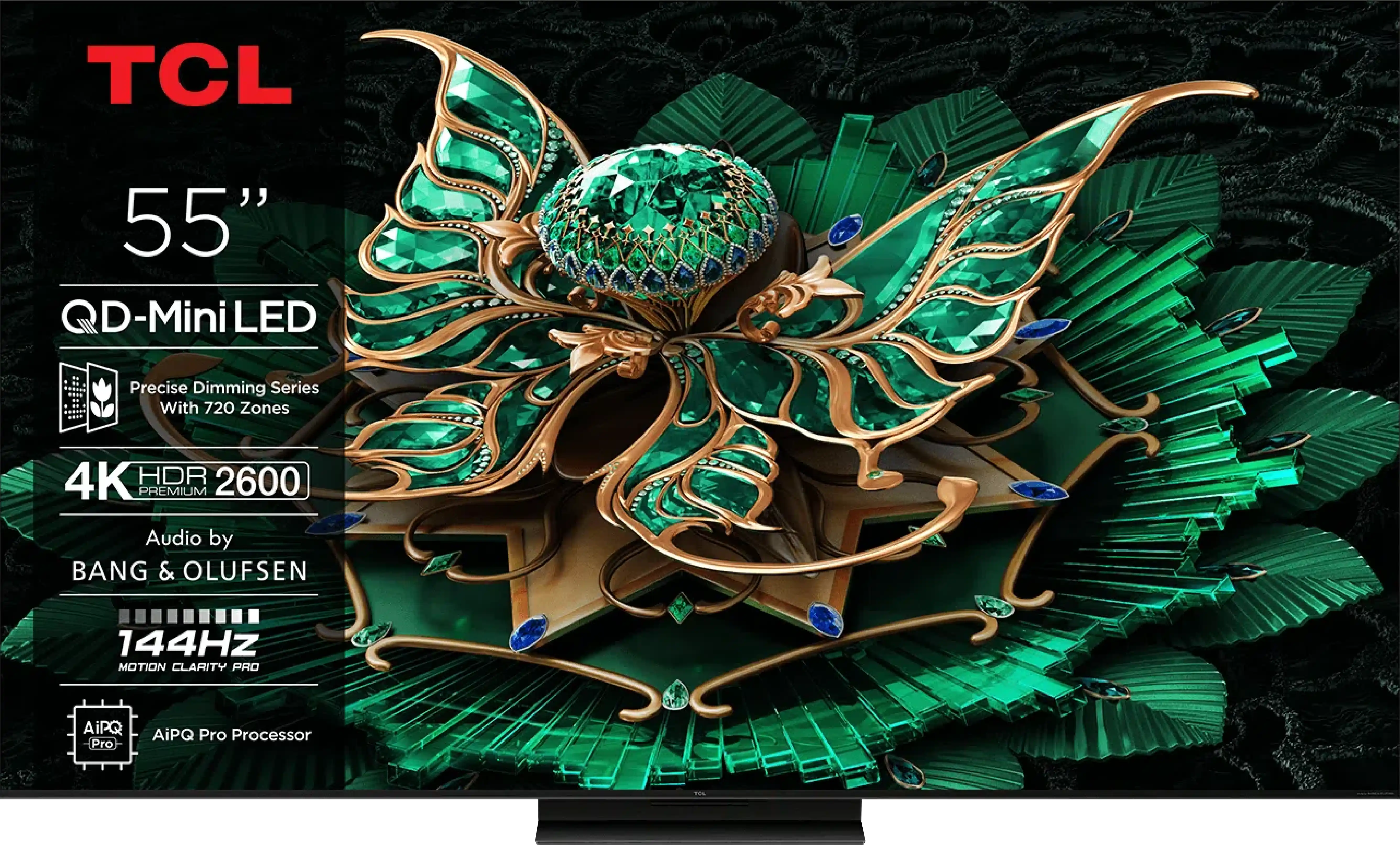
Panel type: LCD VA
Resolution: 3840x2160
System: Google TV
Model year: 2024
Complete the survey to find out the result

Panel type: LCD VA
Resolution: 3840x2160
System: Google TV
Model year: 2025
Complete the survey to find out the result

Overall rating
7.2
7.4
Movies and series in UHD quality
6.8
7.2
Classic TV, YouTube
6.6
6.9
Sports broadcasts (TV and apps)
6.5
6.8
Gaming on console
8.6
8.7
TV as a computer monitor
8.6
8.4
Watching in bright light
6.3
6.4
Utility functions
6.5
7.3
Apps
9.6
9.6
Sound quality
6.9
7.7
Complete the survey to find out what fits your preferences
Advantages
Great choice for gamers - a lot of features, low input lag, 144Hz
High brightness of the screen - good performance during the day
Good black levels and contrast
Advanced Google TV
Premium build quality at a low price
Very good black - VA panel with a large number of Mini-LED zones
High brightness in HDR - over 1000 nits
Great for gamers - HDMI 2.1, low input lag, VRR, ALLM, etc.
Good motion fluidity - 144Hz panel
Supports multiple HDR formats: HDR10, HDR10+, Dolby Vision
Google TV operating system with access to a huge app library
Pleasant sound from built-in speakers (6.2.2) Bang & Olufsen
Disadvantages
Average viewing angles
No recording function
Google TV can work with minor stutters
No USB recording and PiP function
Our verdict
There are TVs that make it to reviews and at first glance seem like just another "mediocre" model. The TCL C7K looks just like that – without big slogans about revolution, without ambitions to dethrone OLEDs. Yet after spending a few days with this model, it's hard not to come to the conclusion that it's truly a successful piece of equipment. The biggest advantages? Very good picture quality at a reasonable price. MiniLED combined with a QLED filter delivers vibrant colors, high brightness, and contrast that really impresses in this class. Motion in sports or games looks smooth, and the presence of HDMI 2.1 and 144 Hz refresh rate makes gaming on this model pure enjoyment. Additionally, the Google TV system offers a huge range of possibilities: from voice control, to AirPlay support, to access to all the most important applications.
Are there any drawbacks? Yes. MiniLED still has its limitations, and in the most challenging movie scenes, compromises in dimming can be noticeable. Google TV also doesn't always operate perfectly smoothly. But these are rather minor issues that do not overshadow the overall picture – which is truly positive. It’s also worth highlighting the difference between variants. The 50-inch version we tested can be surprising, but the 55–85 inch models perform distinctly better – they have more backlight zones, even better contrast quality, and superior sound. Therefore, if you're considering purchasing the C7K, it's definitely worth going for a larger size.
TV appearance





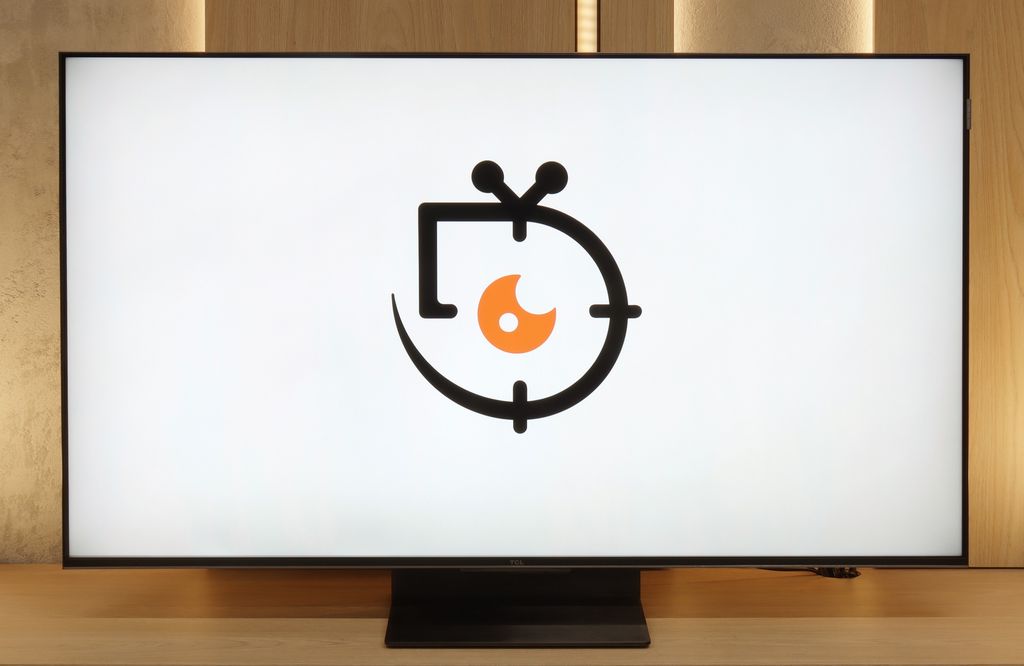
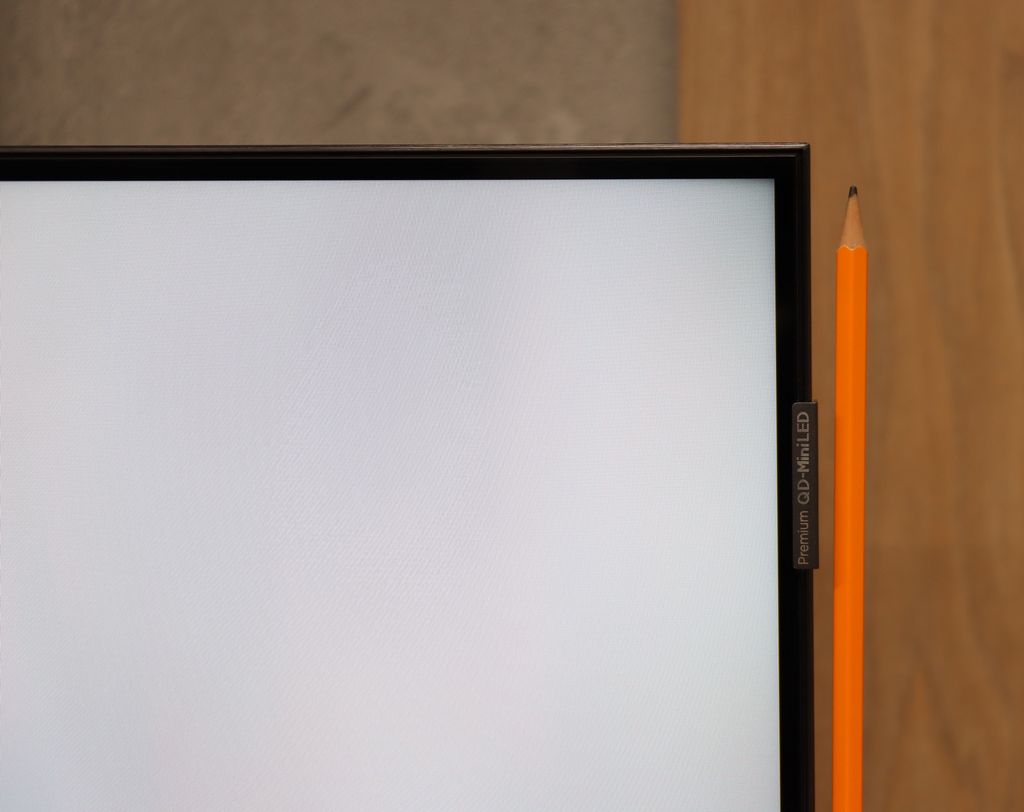
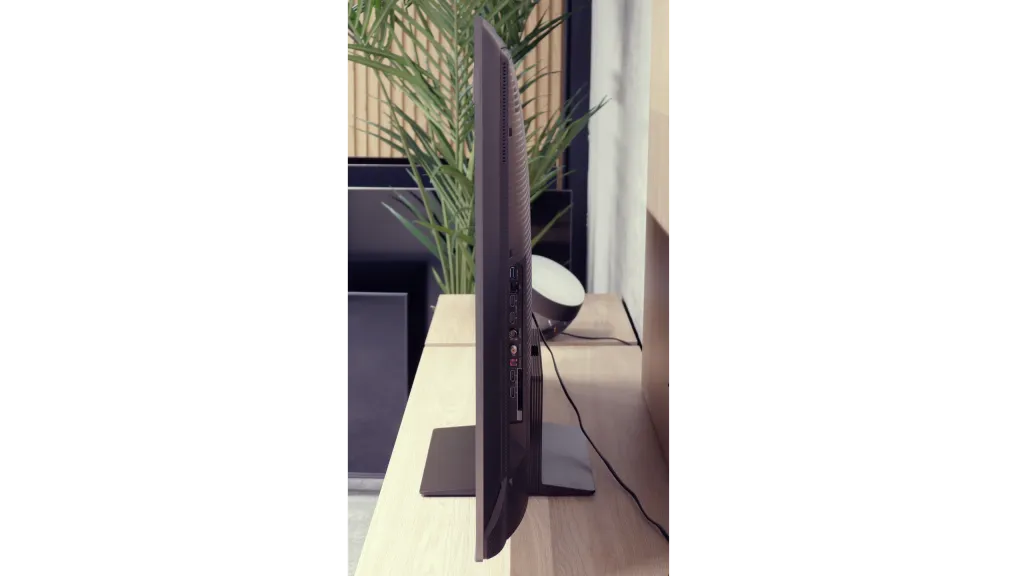
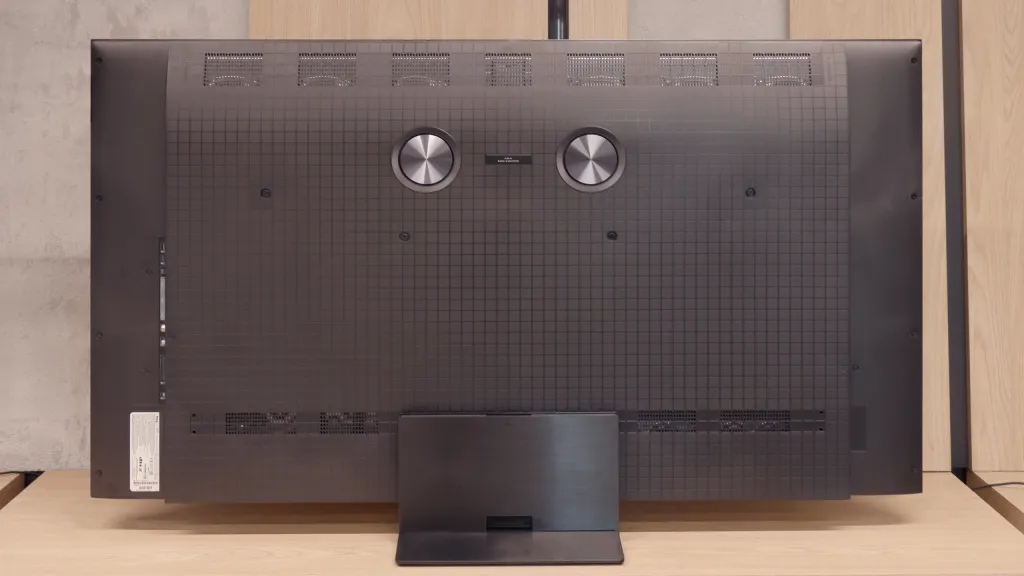
Contrast and black detail
7.7/10
8.1/10
Local dimming function: Yes, number of zones: 720 (36 x 20)
Local dimming function: Yes, number of zones: 1008 (42 x 24)
Contrast:

Result
∞:1

Result
30,150:1

Result
17,500:1

Result
9,500:1

Result
5,750:1

Result
256,000:1

Result
59,850:1

Result
22,200:1

Result
16,850:1

Result
11,400:1
Halo effect and black detail visibility:

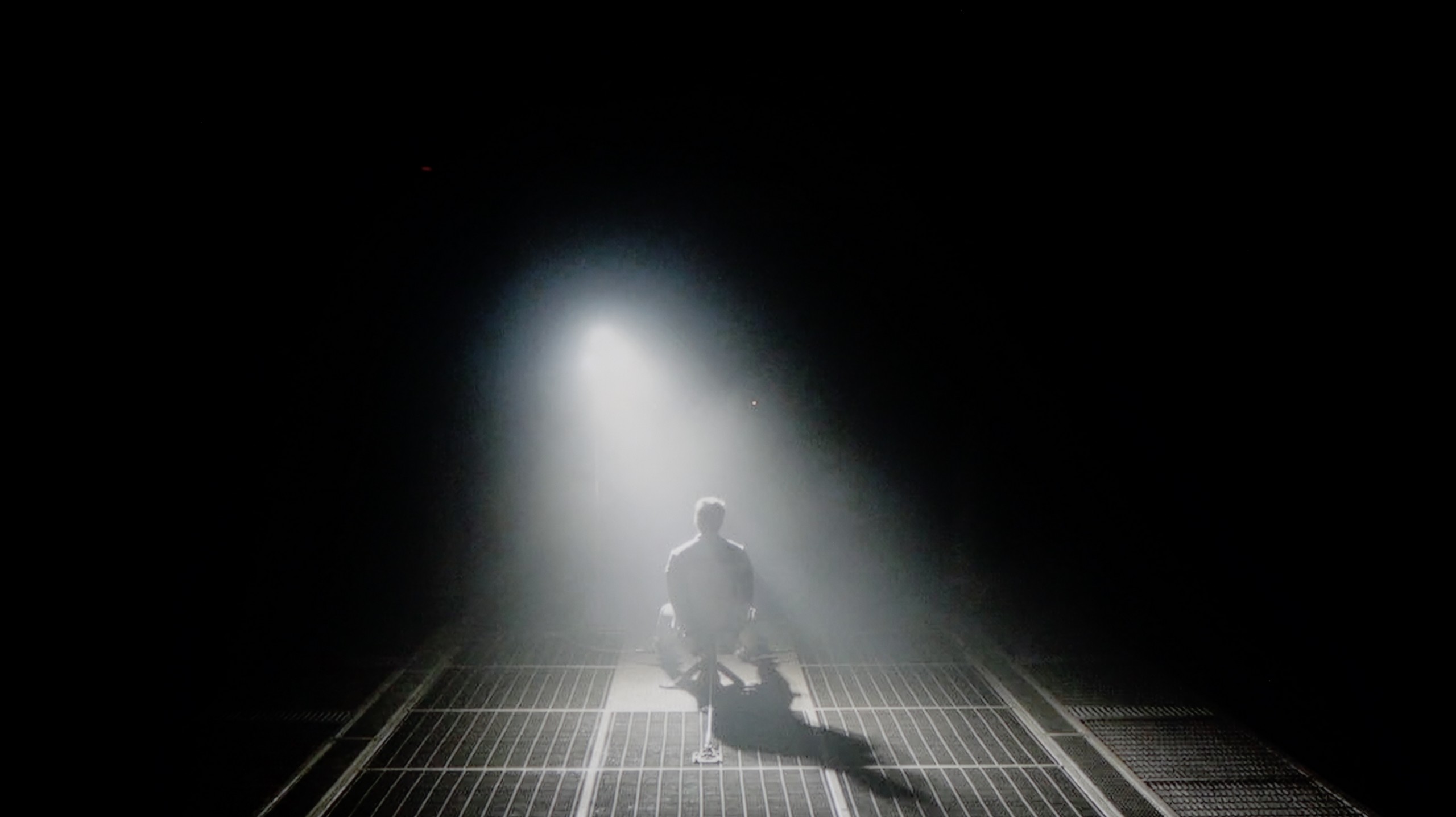
TCL MQLED85/C765 stands out with its use of a VA panel and Mini LED backlighting, which makes a huge difference compared to traditional backlighting systems. Mini LED, thanks to significantly smaller diodes, allows for more precise control of the screen's backlighting, resulting in much better contrast and deeper blacks. The 55-inch model we are testing boasts an impressive number of over 700 local dimming zones, providing exceptional precision in displaying images. It is worth noting that the number of backlighting zones may vary depending on the screen size - for larger diagonals, the number of zones naturally increases due to the larger screen area, allowing larger sizes to achieve better results in terms of contrast and black levels. Thanks to the vast number of zones, the TCL MQLED85/C765 achieved a result comparable to OLED screens on our first test slide from the movie "Oblivion," offering nearly reference-level contrast. But what will happen when we test this model in even more demanding conditions? How will the TV perform in tougher scenarios? Overall, the TCL MQLED85/C765 performs very well in displaying blacks, but in some cases, the local dimming algorithm is not perfect. On dark backgrounds, smaller bright elements can lose sharpness and brightness, as confirmed by our recent slide from the Pioneer Kuro test disc. Despite some imperfections in the local dimming algorithm and the slight presence of the HALO effect (a bright halo around bright objects on a dark background caused by imperfections in the screen's local dimming), the results achieved by the TCL MQLED85/C765 are impressive, especially considering its price. This TV offers contrast and black depth that can compete with models that are even half again as expensive.
The results of black and contrast tests on models from 55 to 85 inches are very similar, which is why in the main part of the evaluation we refer to the 65-inch version. It is a natural phenomenon that larger sizes mean a greater number of backlight zones, and in the case of 65 inches, we counted over 1000. The effect is very good – the contrast is at a high level and is definitely better than in the smallest, 50-inch variant. Typical MiniLED limitations are still noticeable, such as the halo effect or a somewhat too aggressive dimming of the image, but here they are less perceptible than in the smaller model.
For comparison, it is worth recalling that the 50-inch TCL C7K, although surprising with its use of as many as 336 dimming zones, had difficulties managing the backlight in more complicated scenes – there were instances of overexposure or loss of detail. In larger sizes, this problem does not disappear completely, but thanks to a greater number of zones, its impact on the image perception is less bothersome.
HDR effect quality
6.2/10
6.2/10
Luminance measurements in HDR:

Result
1016 nit

Result
365 nit

Result
765 nit

Result
235 nit

Result
1178 nit

Result
1108 nit

Result
405 nit

Result
865 nit

Result
290 nit

Result
848 nit
Scene from the movie “Pan” (about 2800 nits)


Scene from the movie “Billy Lynn” (about 1100 nits)

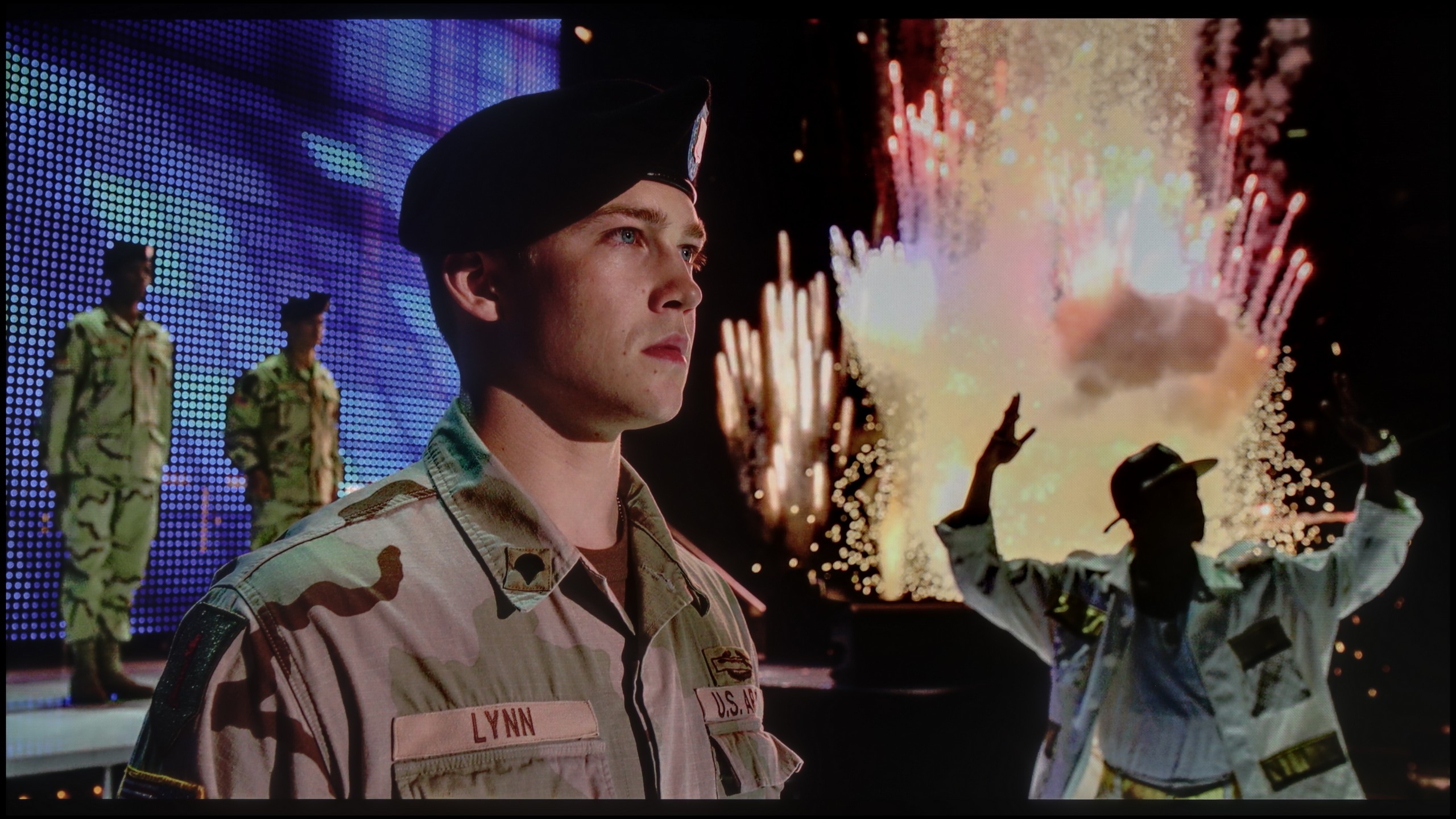
Static HDR10


Dynamic: Dolby Vision
Dynamic: Dolby Vision


HDR luminance chart:
TCL C7K / QM7K 55"-85"
HDR luminance
TCL MQLED85 / C765
HDR luminance
The TCL MQLED85/C765 television performs well with HDR handling. In the tested movie scenes, where the screen is covered at 100% brightness, the model achieves impressive results around 1000 nits, providing intense and realistic representation of HDR content. However, similar to contrast, the dimming algorithm may show some limitations. Despite the large number of Mini LED zones, the television does not always manage to "stun" the user with brightness in very challenging test scenes. For example, in a scene from "Life of Pi," where a bright moon appears against a dark background, and in another scene from "Sicario 2," where a very bright light effect is visible against a dark background, the television did not reach maximum intensity. For users expecting perfect HDR performance in such extreme cases, the TCL MQLED may be slightly disappointing. However, regarding colors, the television stands out with a very high color gamut coverage of DCI P3 at 95%, which is an impressive result comparable to much more expensive models. The TCL MQLED85 / C765 offers support for various HDR formats, including Dolby Vision and HDR10+, which is essential for cinema image enthusiasts. Although this model achieves brightness over 1000 nits, the TCL MQLED85 may struggle to reflect details in very high contrast scenes. For better HDR quality control, the C765 is equipped with dynamic tone mapping, making the image more realistic and natural depending on the content.
In terms of brightness, the models from 55 to 85 inches in the C7K series are truly impressive. In the best testing conditions, the 65-inch screen achieved over 1200 nits, which practically means that the brightest scenes can dazzle with almost cinematic brilliance. These are not just dry numbers from measurements – during screenings, white skies, explosions, or light reflections on water looked incredibly striking, often giving the impression that the television exceeds its price class. This is particularly effective in scenes with a large area of illumination, where the screen is filled with intense brightness – such as in sun-drenched shots or during dynamic action sequences. Viewers looking for strong HDR will definitely be satisfied.
However, scenes requiring precise control of backlighting – with small points of light on a dark background – are more challenging. Here the C7K, despite having over a thousand zones, can still dim brightness to maintain deep blacks. The effect is that in films like Sicario 2 or Life of Pi, some details, such as a distant lantern or single reflections, can be less defined or blend in with the surroundings. This is a compromise inherent to MiniLED technology – it provides excellent image depth and blacks at a level that ordinary LCDs do not offer, but this comes at the cost of limited visibility of the smallest lights.
Factory color reproduction
5.2/10
6/10


Factory Mode
After calibration
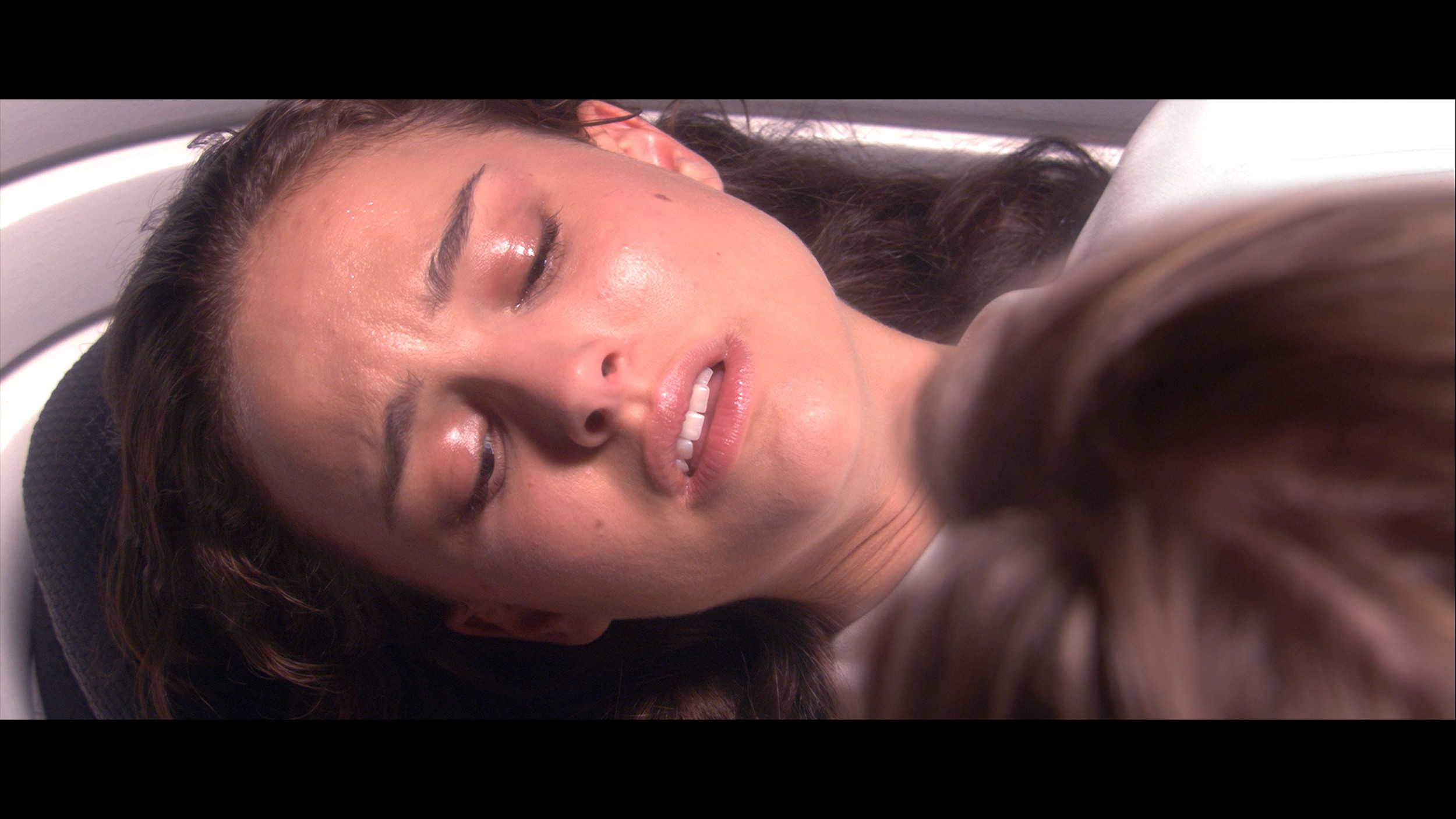
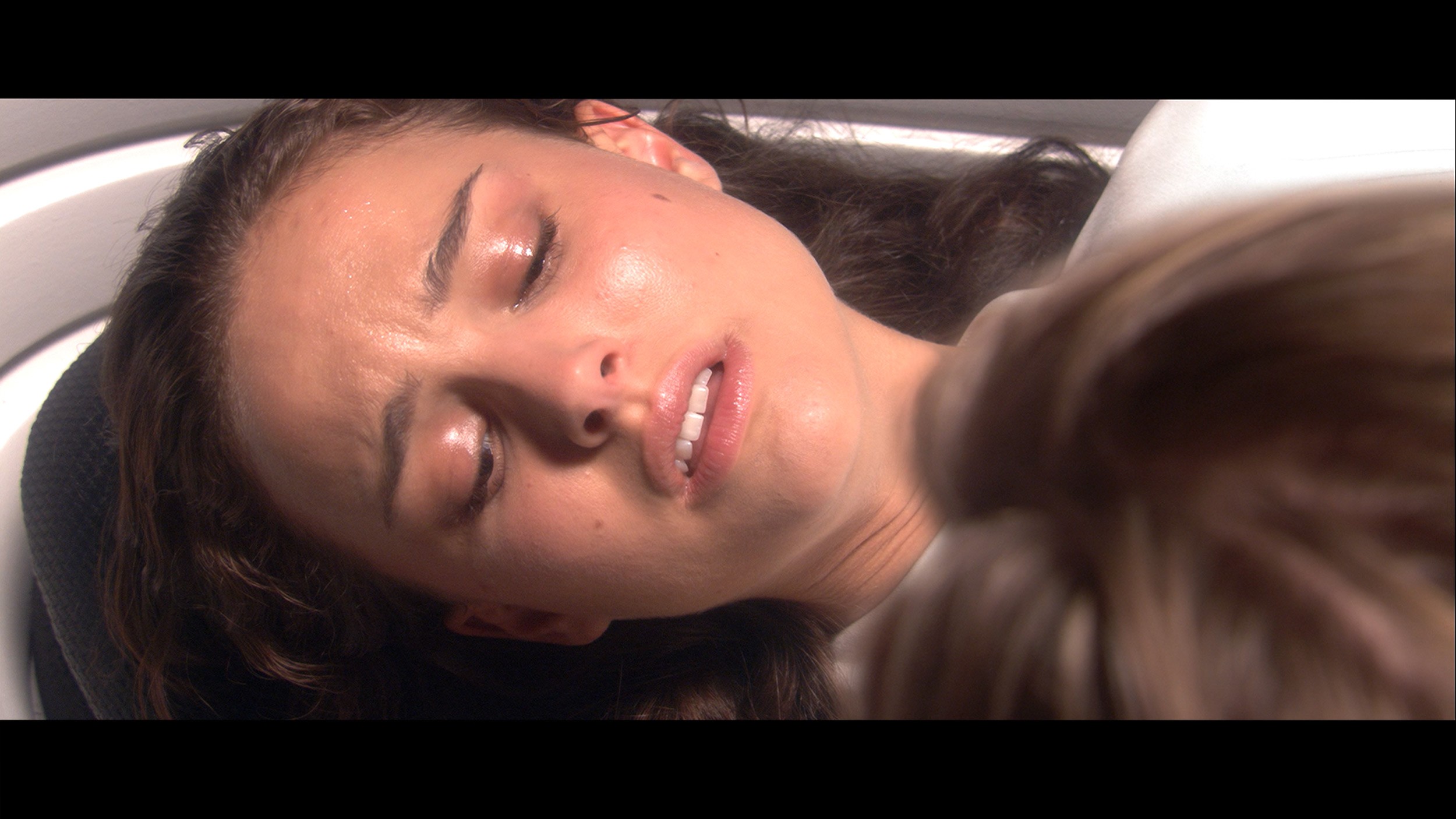
Factory Mode
After calibration
TheTCL MQLED85/C765 television was tested in movie mode, which, although it seems to be the best setting from the manufacturer, is not without flaws. The color reproduction in HD/SDR mode MQLED85 shows certain shortcomings. In the analysis of white balance, there is a significant lack of blue color, which can affect the overall picture quality, especially in bright scenes where blue hues are crucial for natural representation. The overall image may then seem too warm. As for gamma contrast, the graph shows a significant jump above the reference line of level 2.4 at the beginning, which may suggest significant dimming of brightness in darker areas, leading to a loss of detail in blacks. Then, for most of the time, the values are below this line, which can lead to a loss of detail in the brighter parts of the image. Such a distribution can negatively affect the perceived image quality, especially when watching regular HD television.
In the case of 4K HDR image quality of the TCL MQLED85/C765, there is a noticeable excess of red color in the analysis of white balance. Such an excess can significantly affect the viewer's experience, leading to several significant effects. First of all, too much red can make other colors, such as green or blue, appear muted or unnatural. This distortion of color balance can result in an overall impression of "oversaturation," which detracts from the image's naturalness and authenticity. Regarding contrast, the EOTF (Electro-Optical Transfer Function) graph indicates that most values are above the reference line, suggesting an intense boost in brightness in the bright areas of the image. However, the exception is the beginning of the graph, where the EOTF line is below the reference one, which may lead to excessive dimming of small light elements.
Users should be aware that despite using the best mode, which is movie mode, the television is not free from flaws in the context of picture settings, so it is worth considering adjusting the settings to achieve better results.
The novelty in TCL televisions for 2025 is the long-awaited Filmmaker mode, which until now could be found in most competitive brands. This is great news because this mode is considered the most faithful to the original vision of the creators and is often recommended by enthusiasts of good picture quality. Unfortunately – as is often the case – the mere presence of this mode does not guarantee perfection. The Filmmaker mode in the TCL C7K is not free from flaws. One could point out the incorrect white balance, particularly the slight dominance of blue, which led to cool, somewhat grayish skin tones. But that was not the biggest problem. The main complaint was excessive brightness exposure, which is clearly visible in the gamma and EOTF charts. The image was simply too bright, at times almost blown out, which affected not only the depth of scenes but also the overall viewing experience. Some details were simply lost, and the whole image looked as if someone had slightly overdone the brightness slider. As always – we decided to see what could be squeezed out of this after calibration. And that’s when things started to get really interesting…
Color reproduction after calibration
7.8/10
7.5/10

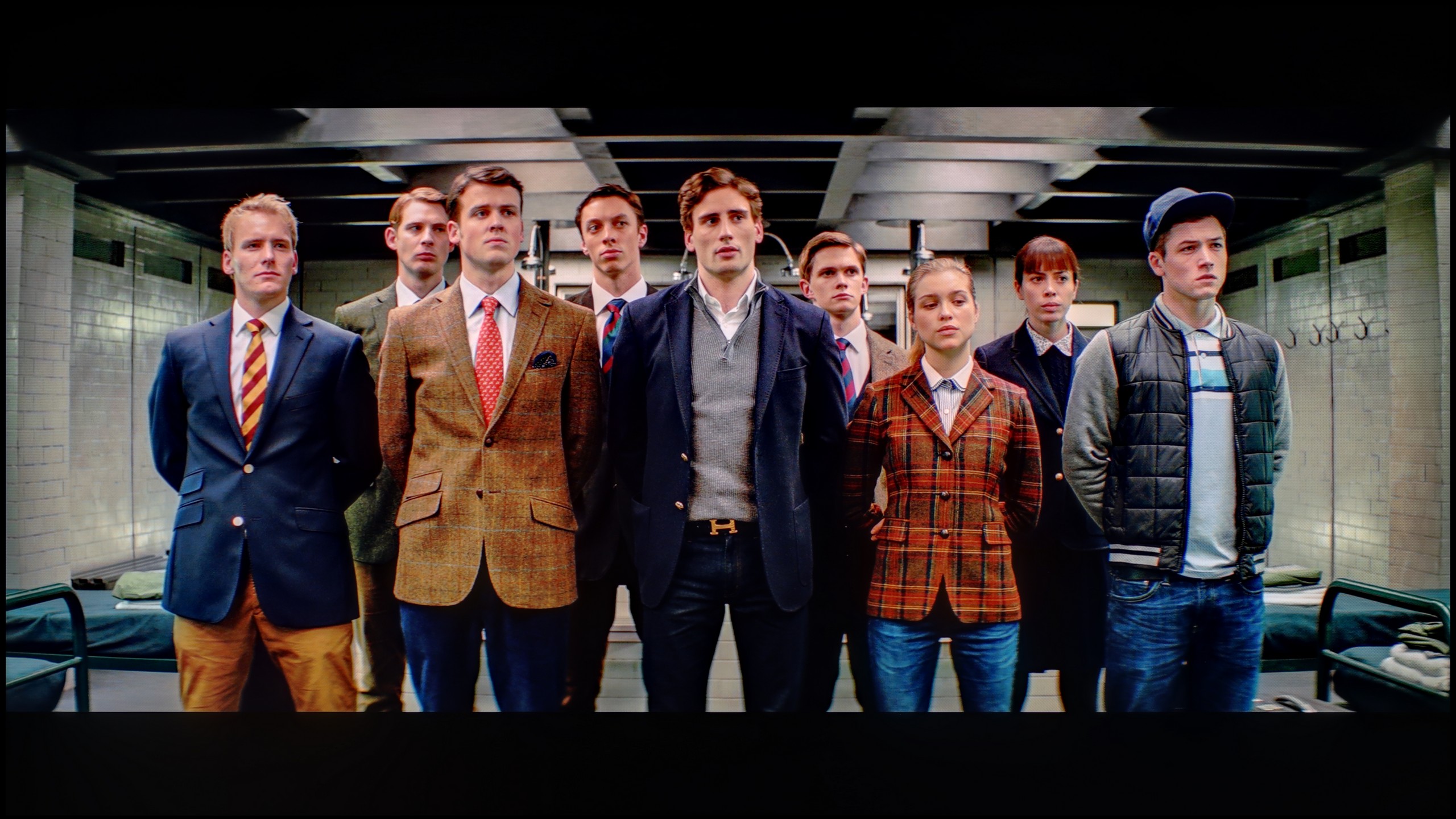

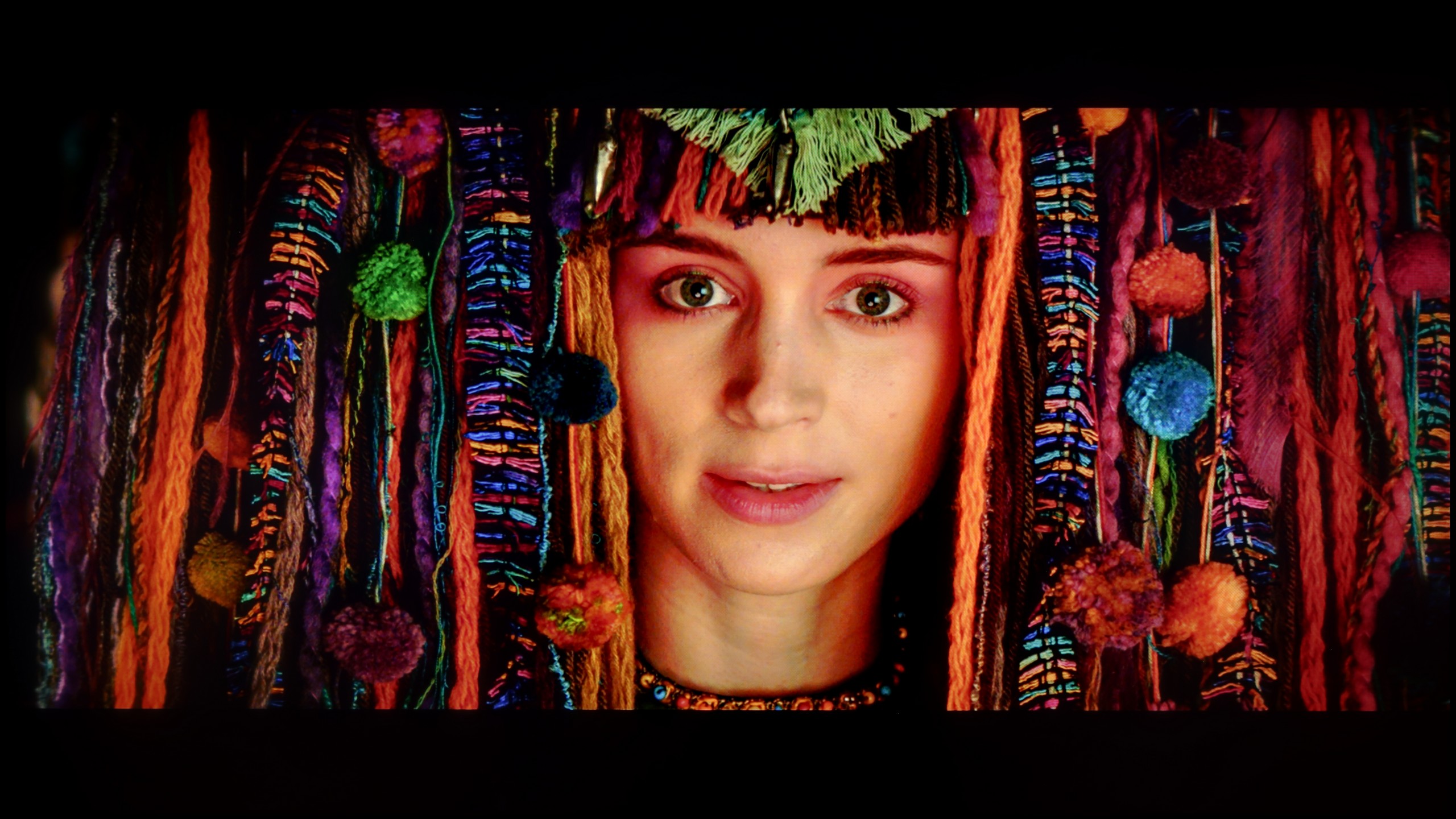
After professional calibration of the TCL MQLED85/C765 television, its color properties in movie mode have significantly improved, resulting in much more satisfying visual experiences. Both in SDR and HDR modes, the white balance shows no serious errors, and the graph appears much better harmonized. Users can now enjoy natural color reproduction, which is essential for achieving an authentic experience while watching movies. It is worth noting that in HDR content, there may be minor color reproduction errors at the end of the graph, but they are significantly smaller than before calibration. This makes characters and landscapes more realistic, enhancing the depth of immersion in the story.
Regarding contrast, the gamma curve, responsible for HD quality, has been completely free of drops below the reference line, which means better detail visibility in dark scenes. However, there is still a slight boost at the beginning of the graph, which may affect the perception of bright elements. For HDR content, the EOTF curve also shows smaller errors, although certain issues in reproducing midtones may still be noticeable. The EOTF curve measured on real film scenes still shows a significant brightness boost, making the image appear more intense but artificially brightened. This is a typical issue for TCL brand televisions, which may appeal to untrained viewers but can be annoying for those more familiar with the ideal picture.
What benefits does professional calibration bring for movie enthusiasts? Thanks to it, watching becomes even more realistic and immersive, allowing every scene to be experienced fully, maintaining details and natural colors.
After calibration, the TCL C7K showed itself in a really good light, especially when it comes to SDR content. We managed to tune the white balance, color gamut, and brightness characteristics so precisely that color errors on the ColorChecker palette dropped below a value of 2. For the uninitiated – this is almost a perfect result, which means that the image is very close to what the creators intended. Unfortunately, it looked worse with 4K HDR content. Although we were able to slightly calm the white balance and correct its previous errors, it is still evident that the television has some "MiniLED traits," especially in brightness management. When we checked how the C7K handles the EOTF curve on actual film scenes, and not just on synthetic test patterns, it turned out that the screen still tends to slightly brighten the entire image. This affects the overall experience – black loses some depth, and the image becomes less contrastive than it should be. Despite these minor shortcomings in HDR content, the overall reception of materials – especially in SDR – is really very good. After calibration, the C7K can display an image that can successfully compete with much more expensive models. Good color tuning, natural skin tones, and pleasant brightness make movie sessions and everyday content viewing more than satisfactory.
Smoothness of tonal transitions
7/10
8.6/10





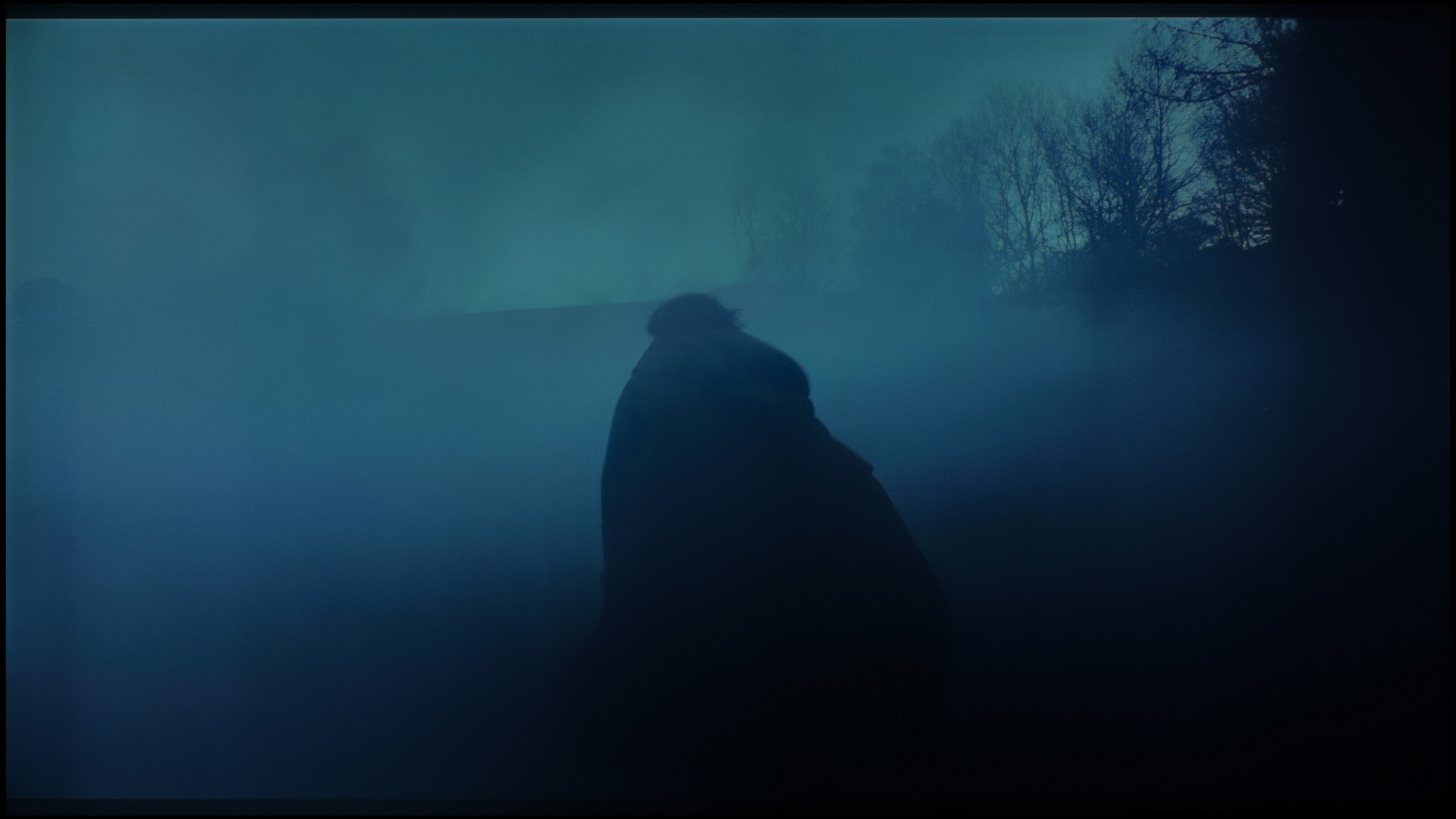






The fluidity of tonal transitions in the TCL MQLED85/C765 television is decent, although certain issues are noticeable in both bright and dark test scenes. In particular, color transitions are visible in a scene from the movie "The Green Knight," where the red color of the water transitions to black. Despite these imperfections, the overall quality of gradation is acceptable and does not overly spoil the visual experience. The television handles most scenes well, offering satisfying tonal transitions, which contributes to an overall enjoyable visual experience that will not ruin our cinematic impressions.
TCL C7K handles color gradation very well – in most tested scenes, the tonal transitions were smooth, and the colors blended together without visible outlines or an artificial “blots” effect. In everyday use, it’s hard to find anything to complain about – the image looks natural, without irritating transitions or digital artifacts. Certain limitations only appear in very dark tones – especially in a heavily muted gray palette, where the television may struggle to reproduce the perfect gradation. But that’s absolutely understandable, as even many significantly more expensive models in this range simply give up. Fortunately, these situations are rare and do not significantly affect the overall perception.
Image scaling and smoothness of tonal transitions
5.1/10
5.5/10
Smooth transition function

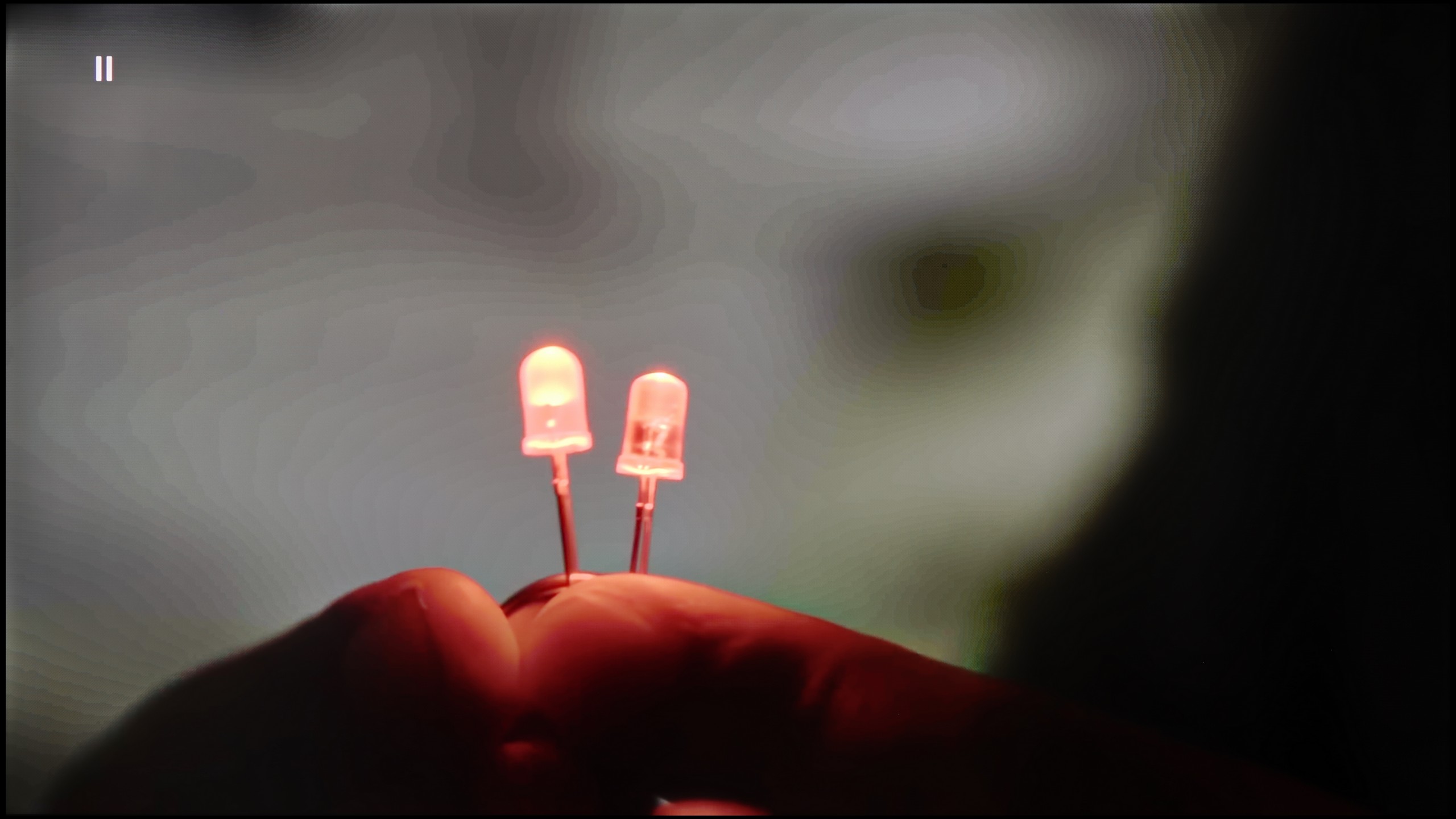
Image without overscan on the SD signal


We will now take another look at the tone transitions in the TCL MQLED85/C765 television, but in the context of poorer image quality. Despite the presence of the "Gradual Smoothing" option, when set to "low," the effects are practically invisible, disappointing users expecting an improvement in image quality. On the other hand, setting it to "high" brings minimal results, and worse, it can blur significant details, negatively affecting the sharpness and clarity of the displayed image. However, in terms of image scaling, the television successfully displayed the image without overscan, which means we do not lose any part of the view. The image looks quite decent, and details such as tree branches or the outlines of models do not show significant fraying, which positively influences the visual quality.
TCL C7K features a function that, according to the manufacturer, is supposed to smooth out unwanted color transitions – something like a rescue for less successful tonal changes. It's called "Gradual Smoothing" and... well, it sounds ambitious, but in practice, it works very poorly. Regardless of whether we set it to low or high, the difference is minimal. Worse still – the function can cut out elements from the image that should remain. Fortunately, film grain remains untouched, so at least it doesn't smooth everything indiscriminately, but still – it's better to just turn this option off.
When it comes to scaling lower-resolution content, it's already better. SD and HD materials look quite decent, although sometimes we felt that the image loses sharpness and becomes too soft – as if something took away its clarity. Fortunately, with very low sources (e.g., 576p), there was no overscan effect, meaning the image was not artificially cropped – everything fit on the screen as it should.
Blur and motion smoothness
7.5/10
8.1/10

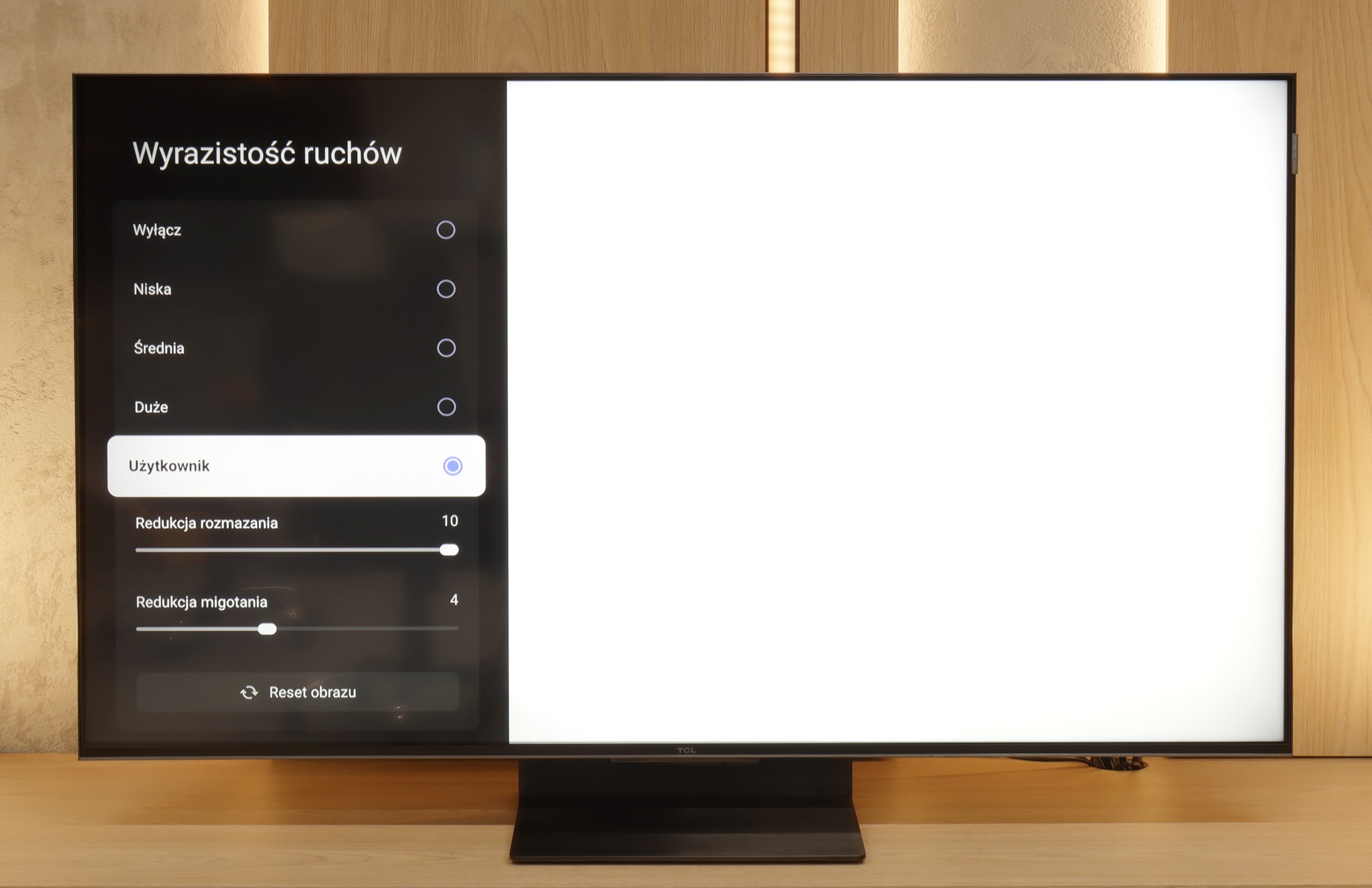
Blur (native resolution, maximum refresh rate):





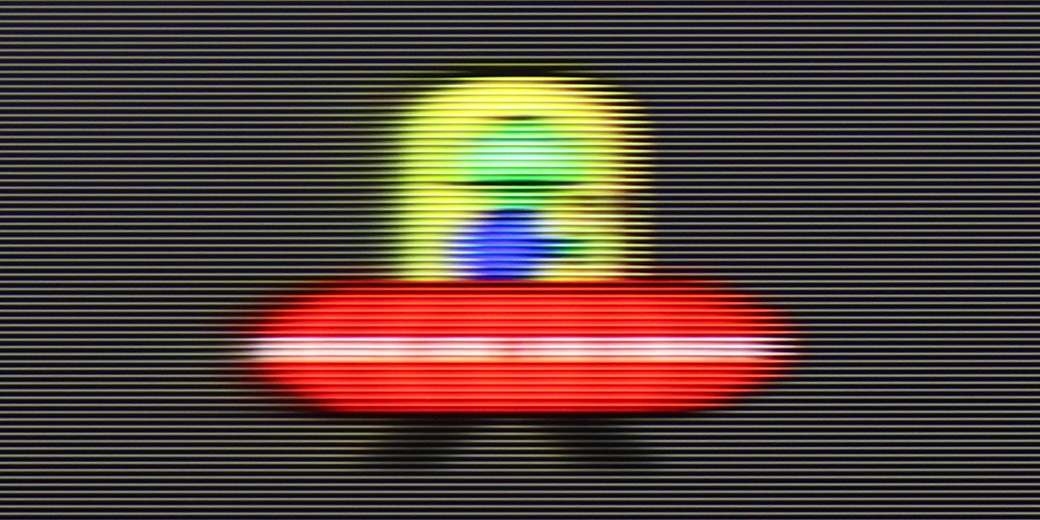
Blur (BFI function enabled):






Smużenie ():
Smużenie (4K@144Hz):



TCL MQLED85/C765 is equipped with a standard refresh rate matrix of 120 Hz, with the possibility of increasing it to 144 Hz when connected to a powerful computer. The television also offers a multi-stage motion smoother, which mainly serves users who want to improve motion smoothness in films. It allows for the adjustment of the effect's intensity on a scale from 0 to 10, enabling precise matching of image smoothness to individual preferences. The matrix's response time is decent but not perfect. We can observe ghosting occurring behind both dark and medium objects.
The TCL C7K handles motion fluency really well. The panel used in it offers a refresh rate of 144 Hz, which in itself suggests that this TV is something more than just an ordinary "60 Hz" panel. Moreover, if we connect the C7K to a computer and set the resolution to Full HD. But we'll write more about that in the paragraph about gamers and PC collaboration. Back to everyday use – both sports and movies look very good here. Thanks to the fast panel and well-functioning motion smoother, the C7K is great for watching matches, but also for movie screenings. In the menu, we find two sliders – blur reduction and flicker reduction – which allow you to tailor the smoothness effect to your own preferences. At lower settings, we get a more cinematic effect, with a slight stutter in motion. At higher settings – the image becomes more theatrical, smooth to the point of exaggeration. Everyone can set it up according to their liking.
Console compatibility and gaming features
9.8/10
9.8/10
- ALLM
- VRR
- VRR range48 - 144Hz48 - 240Hz
- Dolby Vision Game Mode
- Correct implementation of HGIG
- 1080p@120Hz
- 1440p@120Hz
- 4K@120Hz
- Game bar

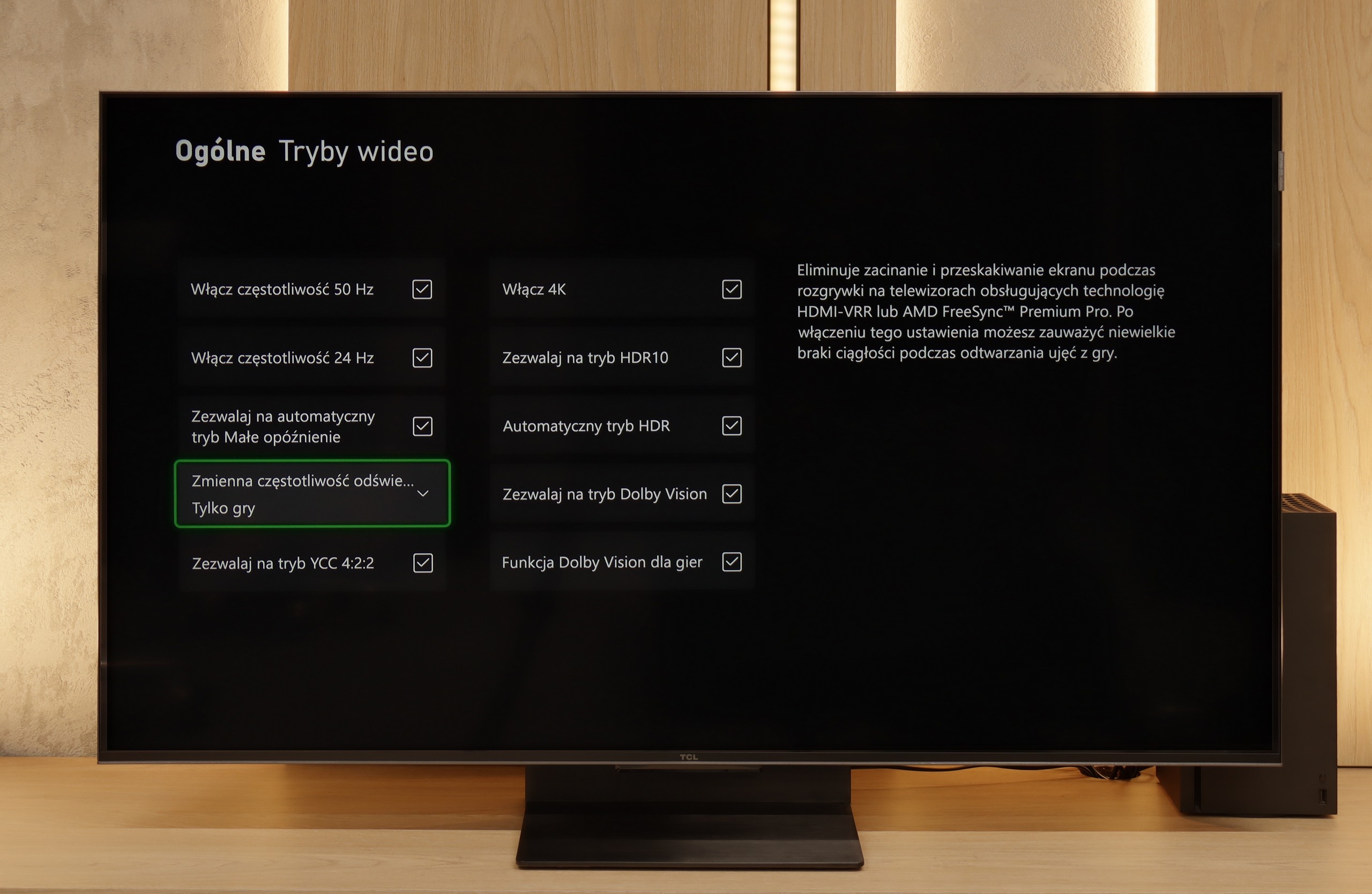

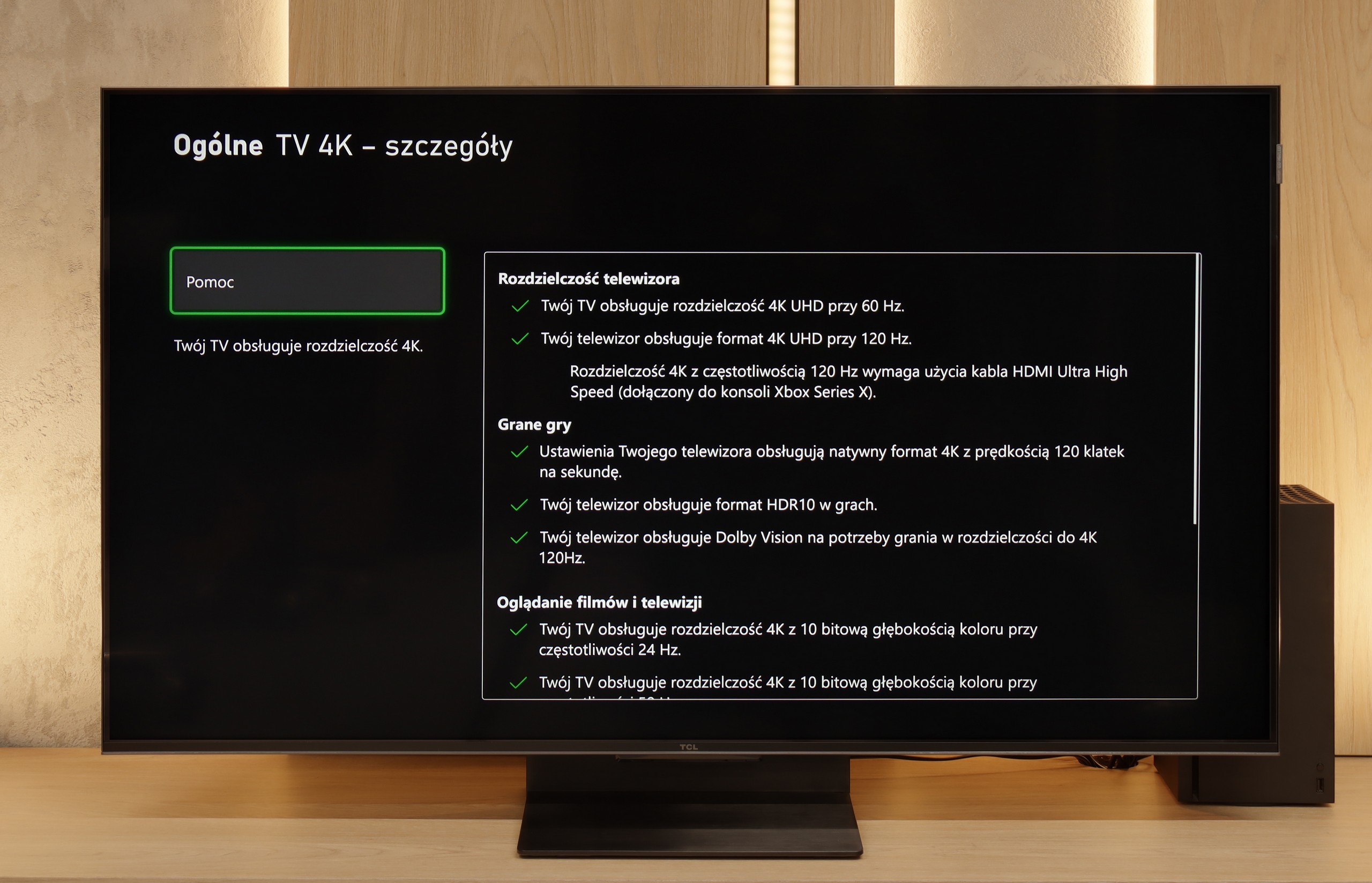

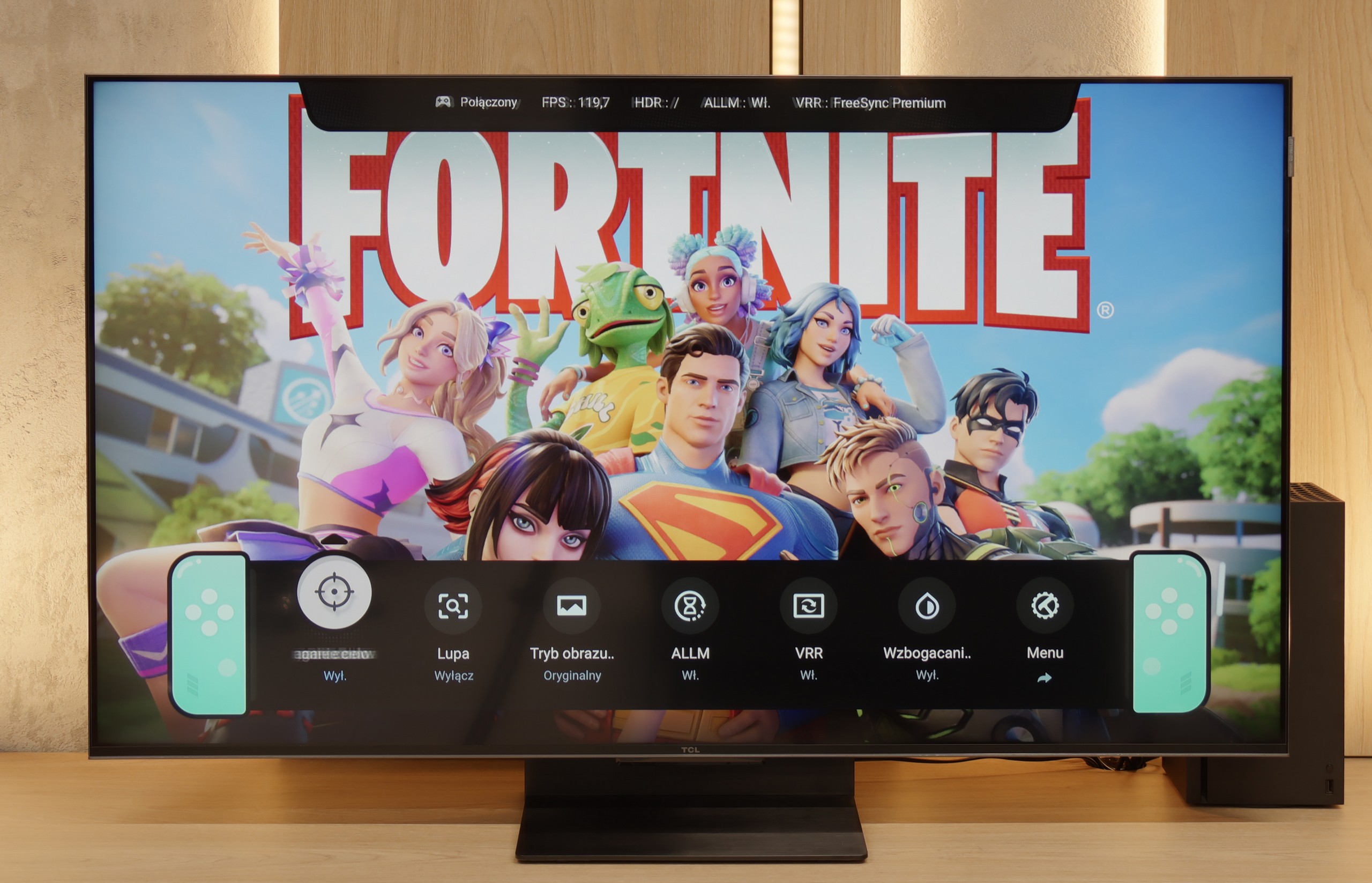

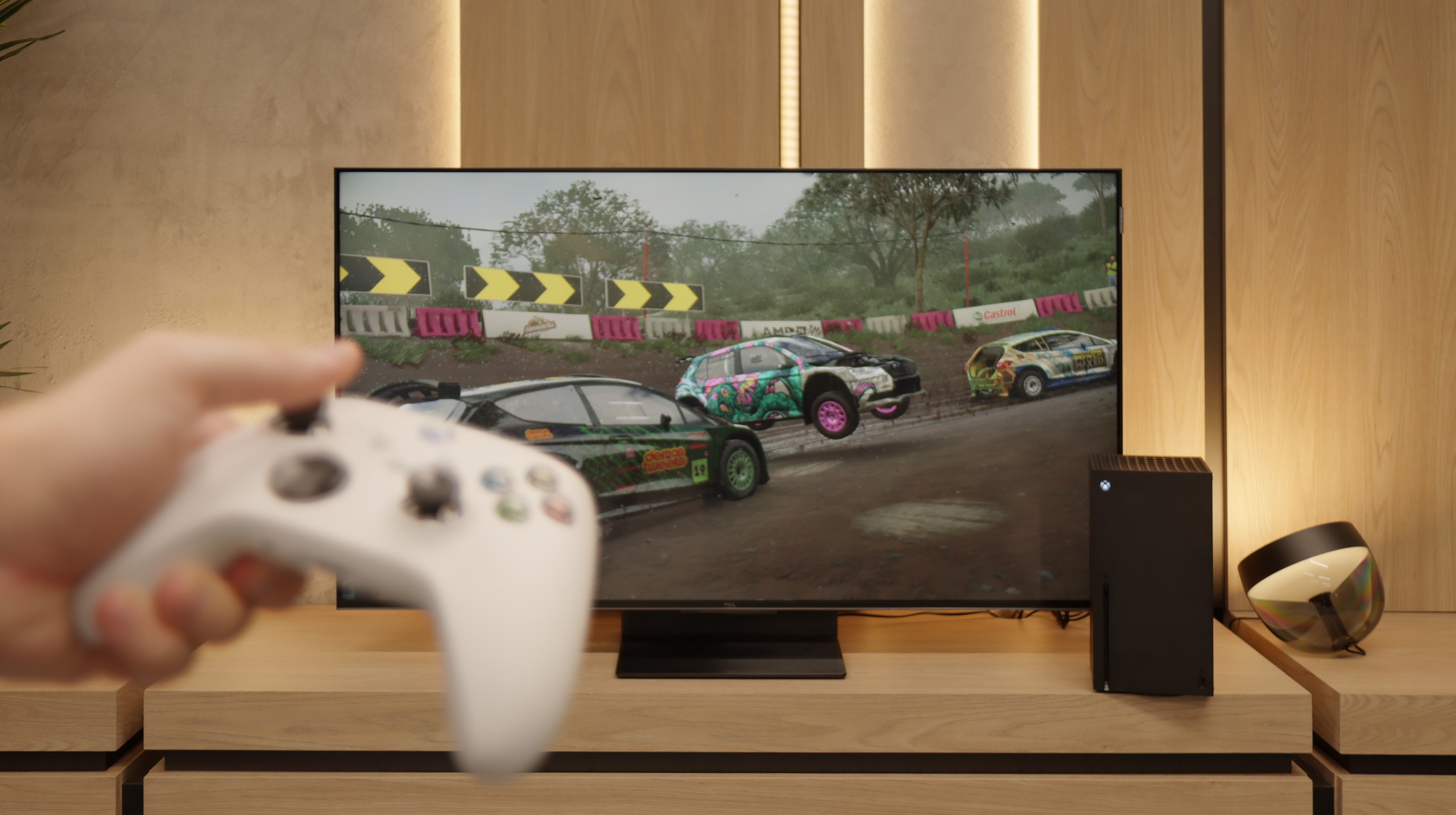
TCL MQLED85/C765 has received an impressive rating in the gaming features category, making it an excellent choice for gaming enthusiasts. The television supports all the latest technologies that significantly enhance the gaming experience. Among the key gaming features is ALLM (Auto Low Latency Mode), which automatically switches the television to low latency mode, minimizing response time and ensuring smooth gameplay. VRR (Variable Refresh Rate) supported in the range from 48 to 144 Hz eliminates stuttering and screen tearing in dynamic gaming scenes. Additionally, the television supports Dolby Vision Game Mode, which provides better image quality in games with exceptional color depth and contrast. TCL MQLED85/C765 also features a decent but not the best implementation of HGiG (HDR Gaming Interest Group), optimizing HDR game display, but in the case of TCL, it causes bright details in white, resulting in some elements blending into a white spot - we can read more about this in the color reproduction section. It supports various resolutions such as 1080p@120Hz, 1440p@120Hz, and 4K@120Hz, allowing gamers to take advantage of higher image quality and better fluidity. The Game Bar feature allows for easy switching between game settings and quick control of parameters, significantly facilitating the adjustment of the television to individual needs. With support for G-Sync and FreeSync technologies, users of NVIDIA and AMD graphics cards will be pleased with the synchronization of refresh rates, eliminating tearing and stuttering issues, providing a smoother and more immersive gameplay experience.
MQLED85/C765 is a television that combines advanced technologies and excellent support for gamers, making it an ideal choice for those who want to maximize their gaming experiences.
TCL C7K is a television that on paper looks like the dream equipment for gamers – and most importantly, it holds up well in practice. First, the good news: we have two full-bandwidth HDMI 2.1 ports, so we can easily connect both a console and a computer, taking full advantage of their capabilities. The panel itself supports a refresh rate of 144 Hz, which provides a significant advantage in dynamic games. Additionally, it comes with a full suite of gaming features: VRR (variable refresh rate), ALLM (automatic low latency mode), and support for Dolby Vision in games. There's also an HGiG mode that allows for HDR effects consistent with the creators' intentions. GameBar, which is an informative bar for the gamer. It operates quickly, looks clear (like the Nintendo console👌), and shows what’s most important: the current frame count, VRR status, and even HDR parameters.
Input lag
9.8/10
9.6/10
SDR
HDR
Dolby Vision
Input lag on the TCL MQLED85 television reaches impressively low levels under any conditions. Even the most demanding gamers will surely appreciate the minimal input lag of only 8 ms at 4K 120 Hz settings with HDR. Moreover, the delays remain at the same level even with Dolby Vision HDR turned on, which is not the case with many competitive models.
When it comes to delays, the C7K gives no reason to complain. In games at 120 Hz, the input lag is around 10 ms, which means the television responds really quickly. Interestingly, even in Dolby Vision mode, the result is very similar, which is not always the standard. Good job, TCL. At 60 Hz, the lag naturally increases a bit, but that's completely normal and applies to virtually every television with a refresh rate of 120 Hz or higher. The most important thing is that everything still operates smoothly and there’s no feeling that something is unresponsive to our actions.
Compatibility with PC
8.6/10
8.4/10

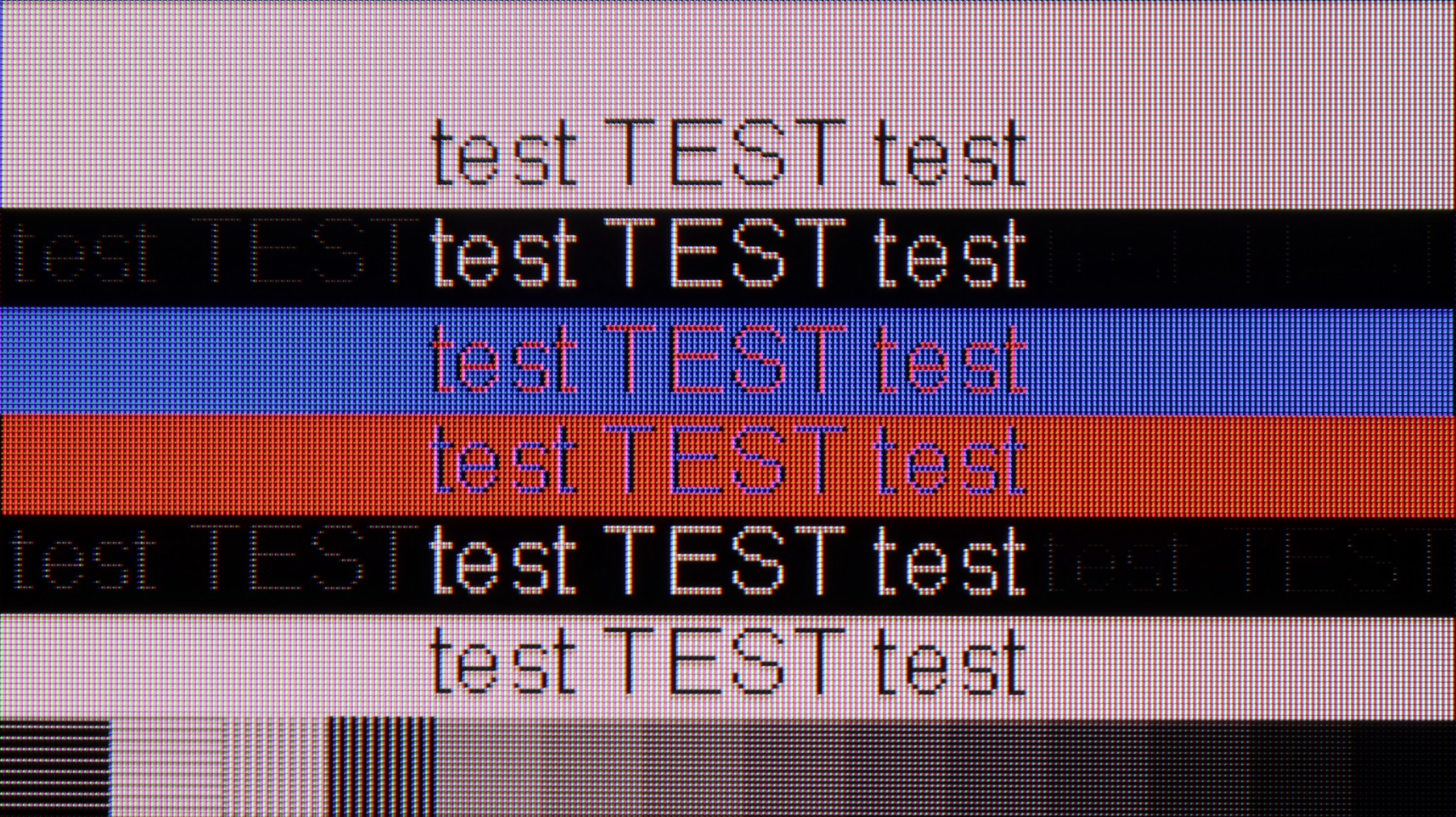
TCL MQLED85 performs well as a computer monitor. Thanks to 4:4:4 chroma support, text on the screen is clear and readable, which is important for people working with text documents or spreadsheets. One of the greatest advantages of this model is its exceptionally low input lag in "PC" mode, which is only 8 ms. This is a reference-level result that ensures smoothness and responsiveness, crucial for both gamers and those engaged in video editing. However, it is worth noting that there is a certain issue related to font display on dark backgrounds. When zooming in on the tested font image, it can be seen that horizontal lines are darker compared to vertical ones. This means that the sub-pixels in the television do not fully illuminate in this case, which can affect the quality of the displayed text. Nevertheless, the overall performance of TCL MQLED85 as a computer monitor is very good and will certainly meet the expectations of many users.
If we intend to connect the C7K to a computer – especially for gaming – there’s really a lot to play for. We have 4K at 144 Hz, which sounds great on its own, but if we lower the resolution, the TV can display even 280 Hz. In e-sports, where every fraction of a second counts, this really makes a difference. Additionally, it supports G-Sync and FreeSync, so no matter what graphics card we have – the image will be smooth, without any stuttering or tearing.
However, if we plan to place the C7K on a desk and use it like a monitor, it’s a bit less "rosy." Yes, it supports chroma 4:4:4, so the fonts should be sharp, but with very dark letters, there’s a slight blurriness and dimming of the edges. It's not something that immediately stands out while gaming or watching, but when working with text – it can be distracting. In everyday use – rather without concerns, but if we plan to place 50 inches a meter from our face, it’s worth keeping this in mind.
Viewing angles
3.2/10
3/10
The viewing angles on the TCL MQLED85 television are not its strongest point. The use of a VA panel means that the picture loses a significant amount of brightness when viewed at an angle. When the viewer's position changes, especially when watching with a larger group, colors may appear less saturated, and the contrast may be less pronounced. For this reason, it is recommended to sit directly in front of the screen to fully enjoy the picture quality. Although the television offers excellent color reproduction from a direct view, the loss of brightness and detail at an angle can be problematic for those planning to use the TV in a larger room or from various positions.
There are no surprises here – the C7K has classic viewing angles for a VA panel. That is: sitting directly in front – it’s great. The colors look good, the contrast is strong, everything is in place. But just slightly shifting to the side begins to worsen the experience – the image loses saturation, blacks turn gray, and the overall impression suffers a bit. So if we plan to watch together with several people or have a couch that occupies half the living room – it’s worth seating everyone more centrally. You can watch from the side, but don’t expect miracles – it’s just a characteristic of VA panels.
TV efficiency during daytime
6.3/10
6.4/10

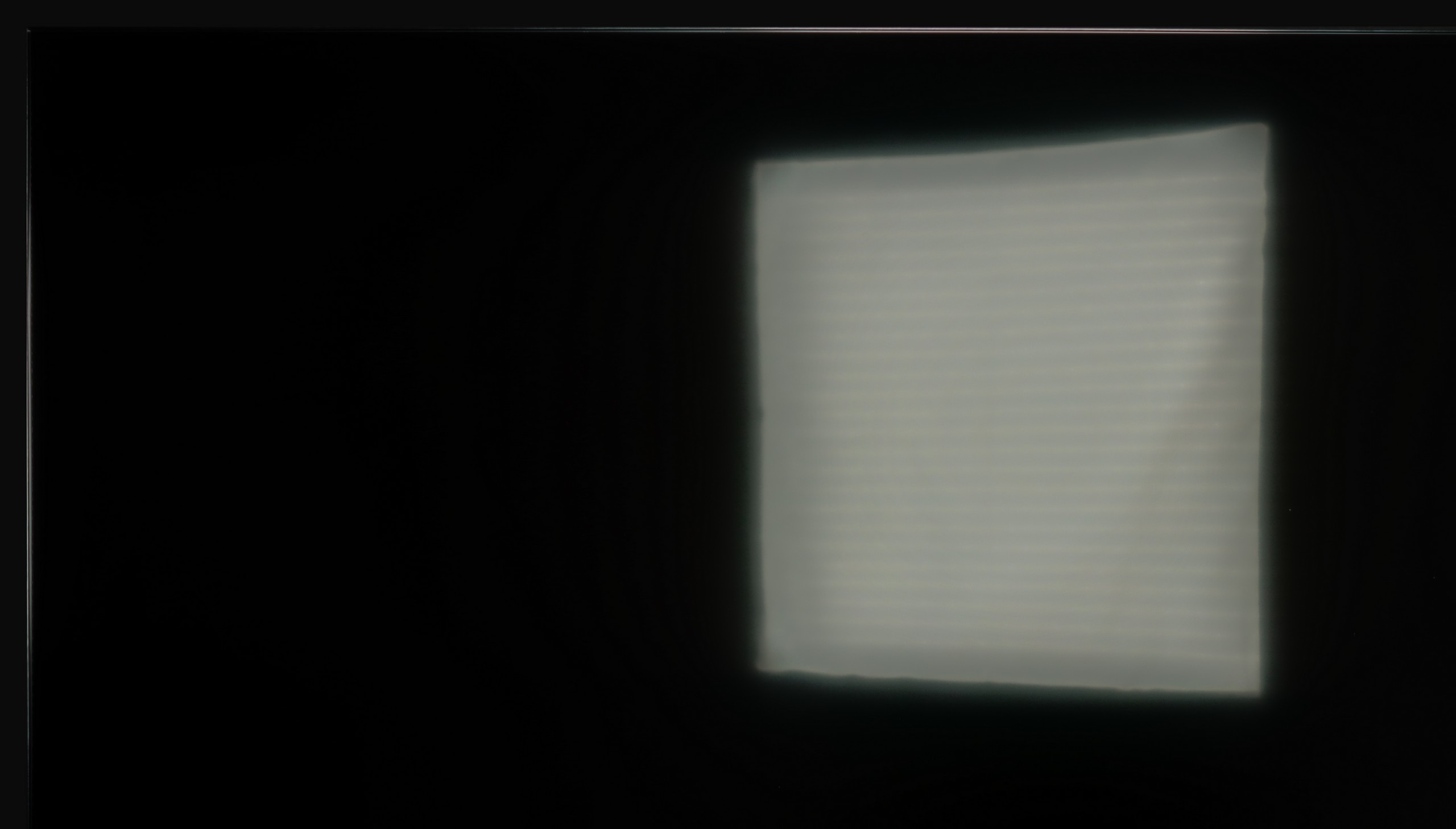


Matrix brightness
Average luminance SDR
TCL C7K / QM7K 55"-85": 529 cd/m2
TCL MQLED85 / C765: 618 cd/m2
MQLED85 performs decently in daylight conditions, and it's worth noting the satin finish of the panel. Although it doesn't excel at reducing reflections, it offers satisfactory performance in various lighting conditions. An average brightness level above 600 nits is an impressive result, allowing for comfortable viewing even in well-lit rooms. As a result, the television works well both during the day and for evening movie sessions, providing satisfactory image quality.
Fortunately, the TCL C7K performs quite well in a bright room. The applied panel has a satin finish that effectively suppresses reflections, making it so that even on sunny days, we don’t have to worry about reflections from lamps or windows. Importantly, the colors maintain their intensity and do not wash out, as can happen with weaker matte panels. Regarding brightness itself, the average for content like YouTube or regular television reaches a little below 500 nits. It’s not a record-setting result— for example, the MQLED85 (C765) performs better in this regard. However, for everyday watching during the day, it should work without major issues, as long as we don’t plan to place it opposite a south-facing window without curtains.
Details about the matrix
Subpixel Structure:

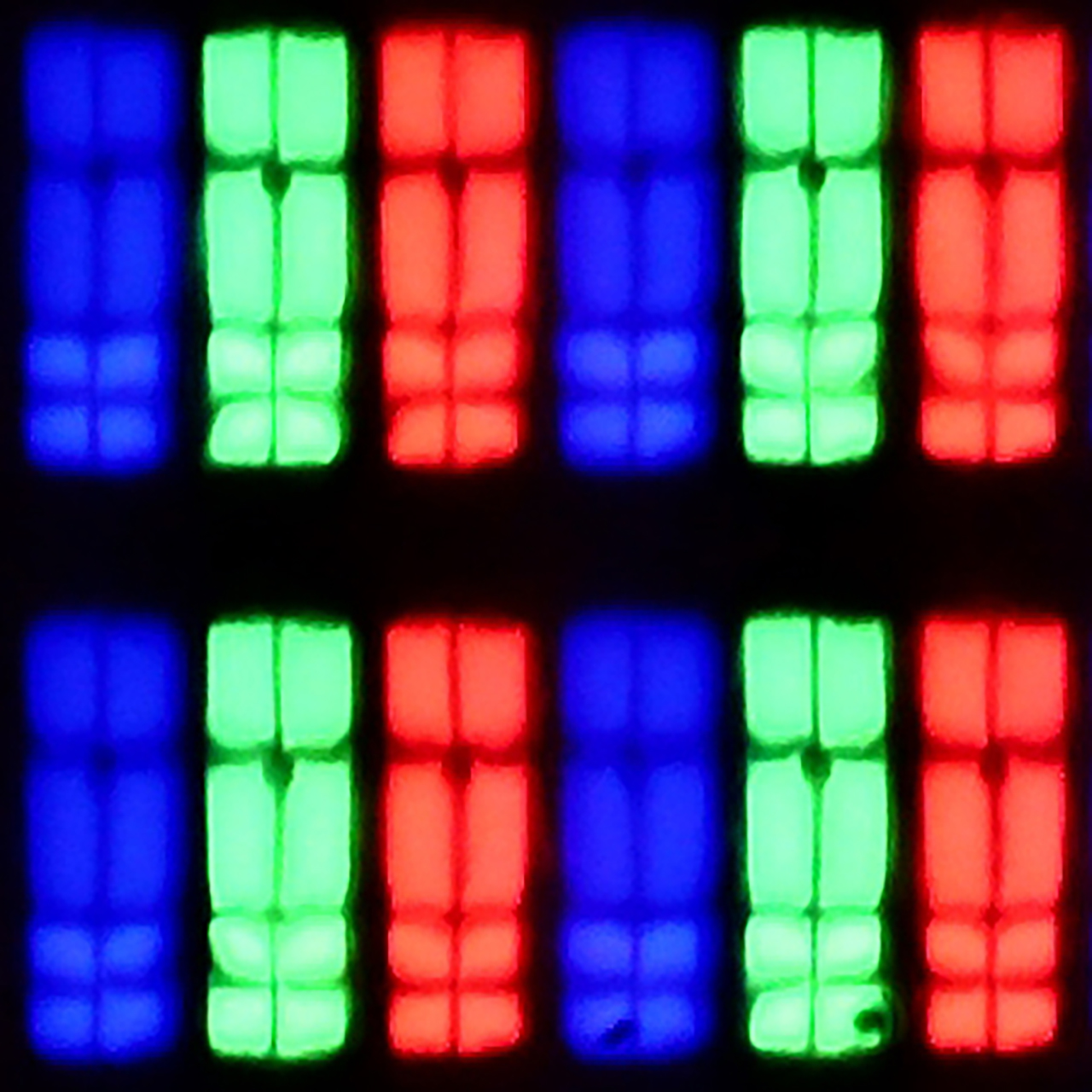
Panel uniformity and thermal imaging:

TCL MQLED85 / C765
TCL C7K / QM7K 55"-85"
TV features
6.5/10
7.3/10
- HDMI inputs2 x HDMI 2.0, 2 x HDMI 2.1 48Gbps2 x HDMI 2.0, 2 x HDMI 2.1 48Gbps
- Other inputsRCA (Chinch)
- OutputsToslink (Optical audio), eARC (HDMI), ARC (HDMI)Toslink (Optical audio), eARC (HDMI), ARC (HDMI)
- Network InterfacesWi-Fi 2.4GHz, Wi-Fi 5GHz, Ethernet (LAN) 100MbpsWi-Fi 2.4GHz, Wi-Fi 5GHz, Ethernet (LAN) 100Mbps
- TV receptionDVB-T, DVB-T2, DVB-S, DVB-S2, DVB-CDVB-T, DVB-T2, DVB-S, DVB-S2, DVB-C
Classic features:
- Recording to USB (terrestrial TV)
- Recording programming
- Picture in Picture (PiP)
- RF remote control (no need to aim at the screen)
- Backlit remote control
- Teletext
- Audio only mode
- Bluetooth headphones support
- Simultaneous Bluetooth headphones & TV audio
Smart features:
- AirPlay
- Screen mirroring (Windows Miracast)
- Voice search
- Voice search in native language
- Ability to connect a keyboard and mouse


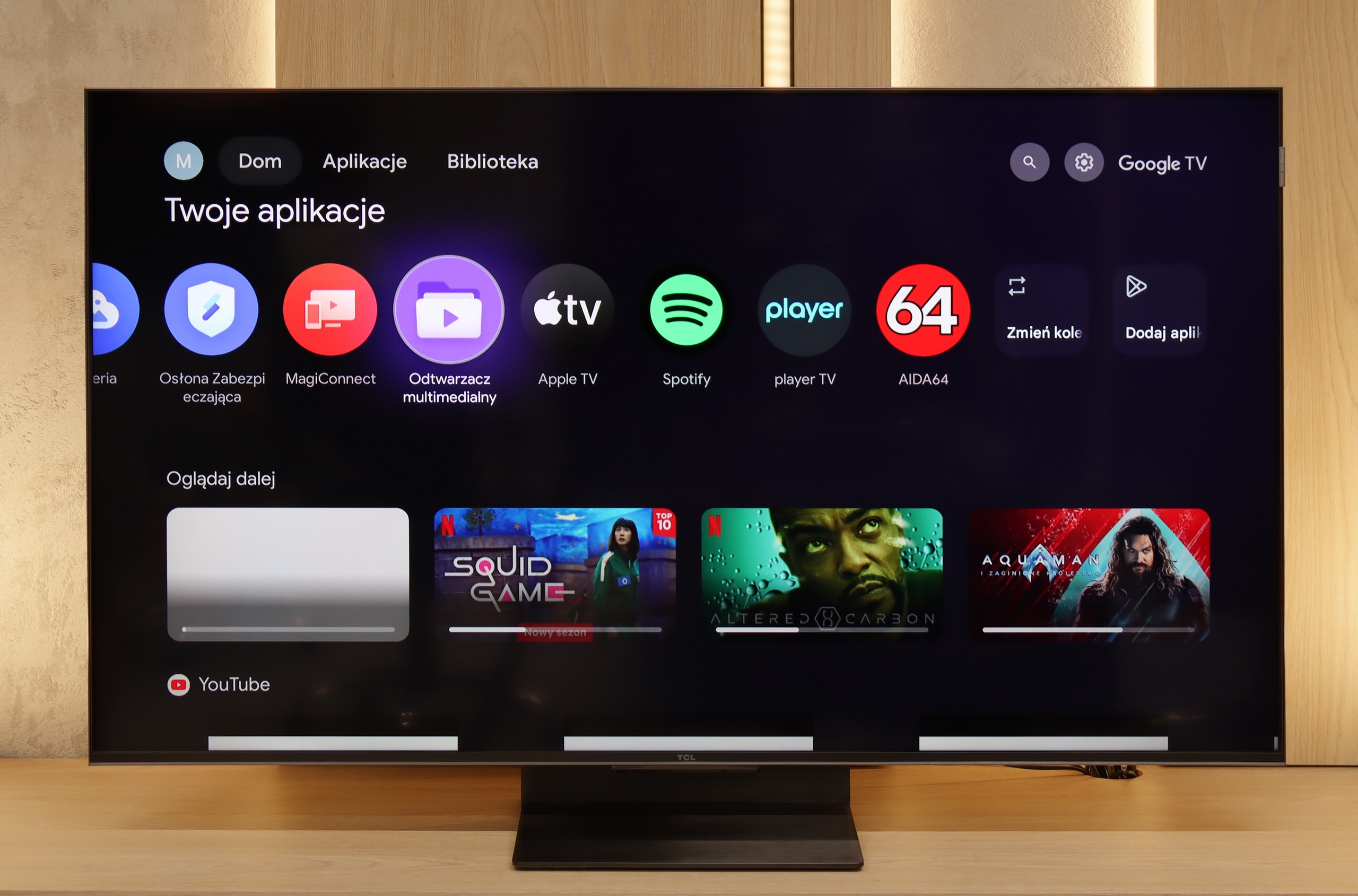
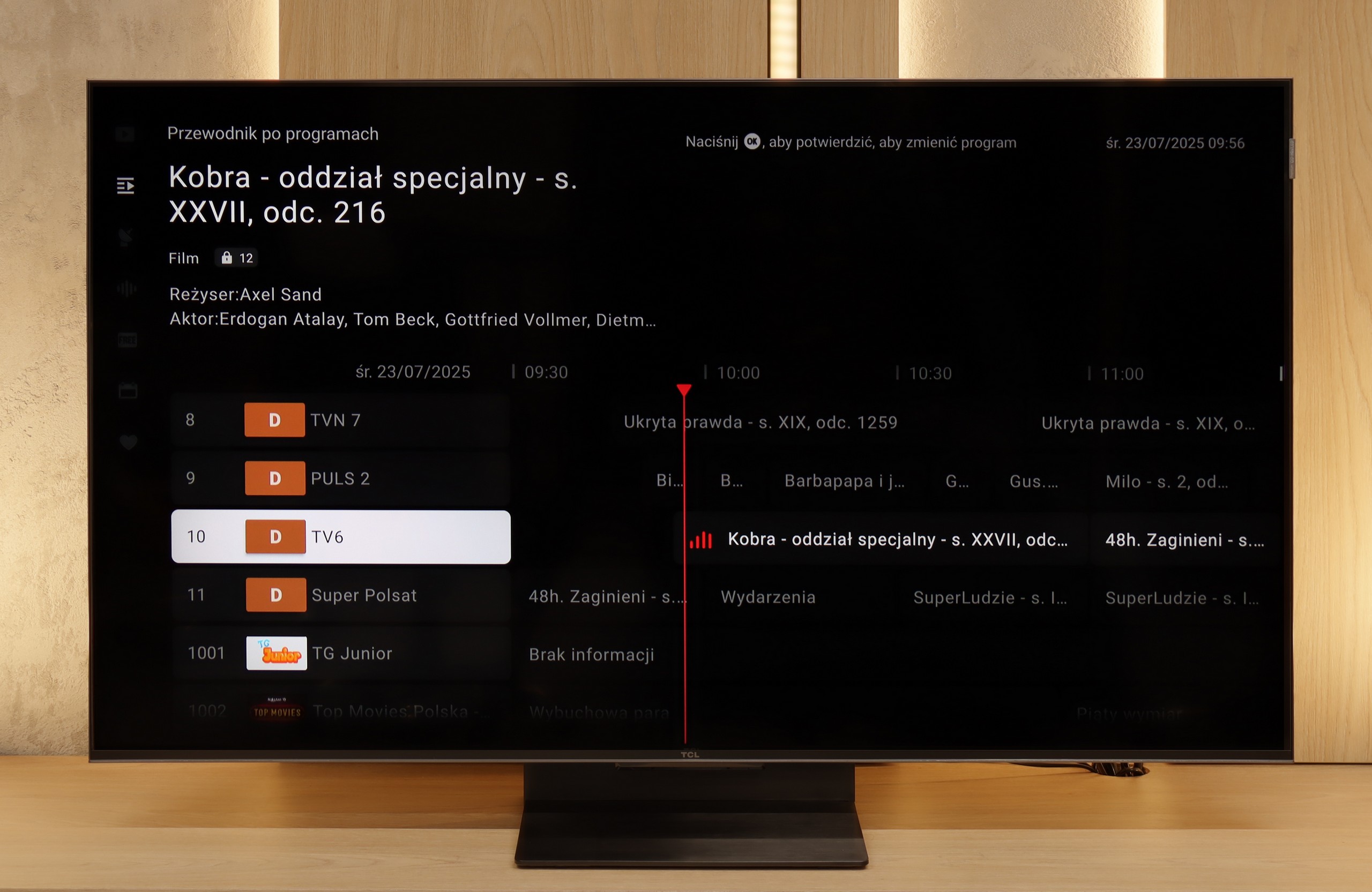
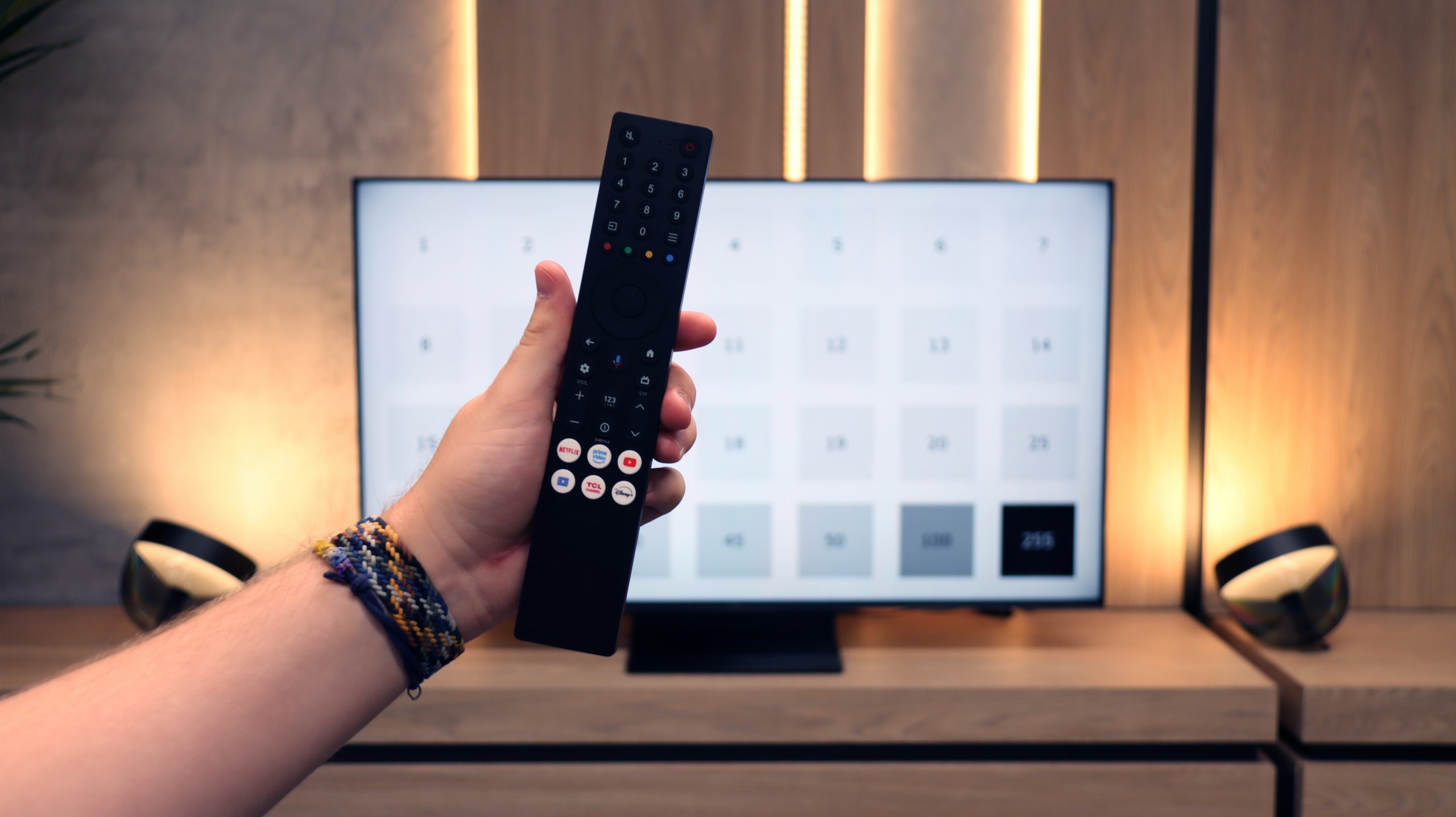
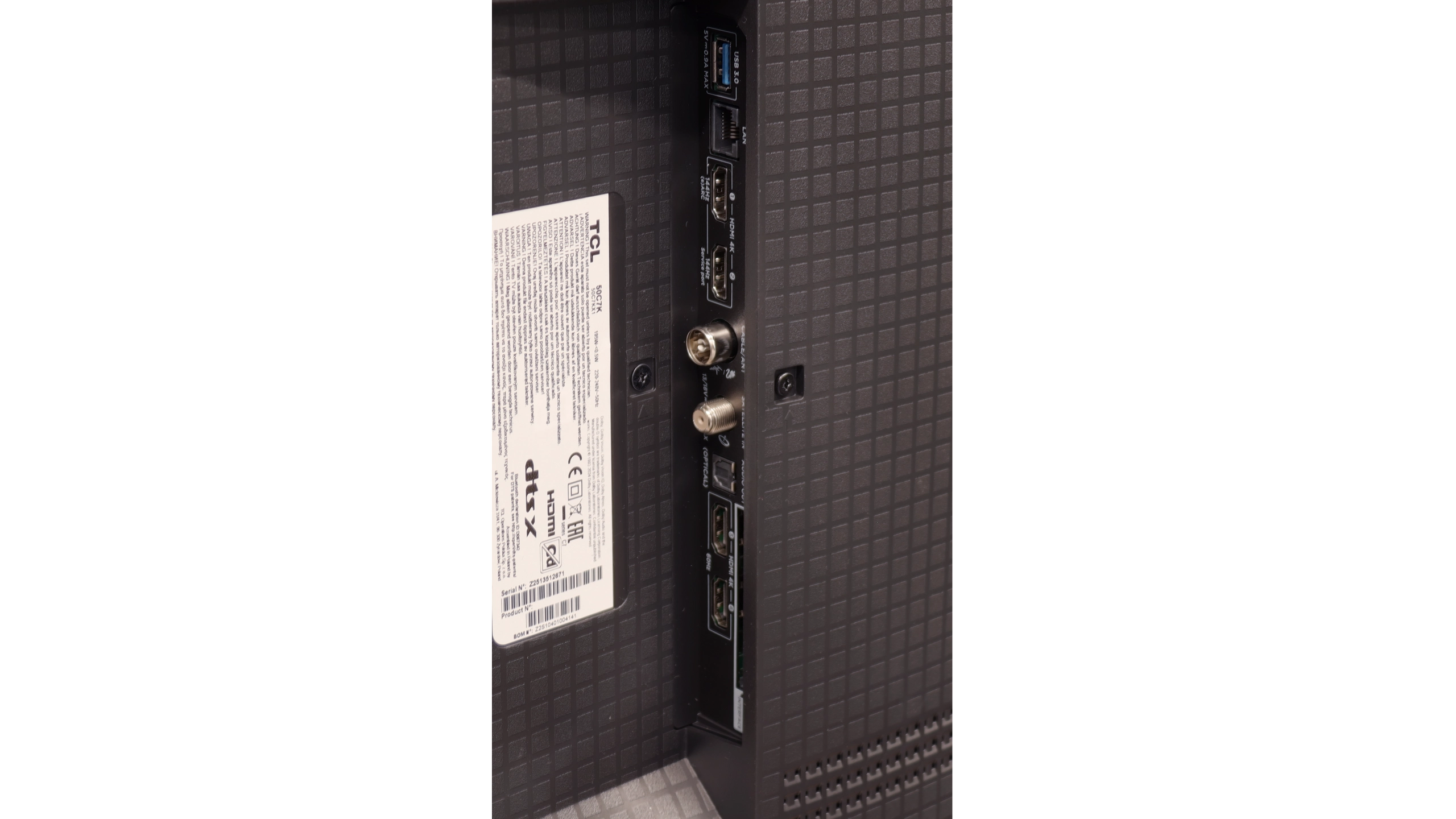
Brak funkcji PIP, obecne "MultiVision" czyli dzielenie ekranu między tv a urządzenie mobilne
SmartTV: GoogleTV
The biggest strength of the TCL C7K in everyday use is undoubtedly the Google TV system. Thanks to it, we have access to an almost endless library of applications, including those more niche ones that are often unavailable on other platforms. The built-in Google Assistant understands Polish, so we can easily ask what is on TV, what the weather is like, and even issue a few voice commands to control the television. We also have to appreciate the presence of Chromecast and AirPlay, which work smoothly and make life easier.
Usability Features
On the downside, the classic features perform a bit worse. Of course, we will find the basics here – teletext, EPG, or the ability to connect headphones – but that's basically it. There is a lack of USB recording functionality and picture-in-picture (PiP) mode, which can still be found with the competition at times. It is also worth noting that Google TV in the TCL version can sometimes have oddly translated fragments of the menu or minor interface bugs. These are not things that hinder everyday use, but detail-oriented people might notice them.
Playing files from USB
8.9/10
9.2/10
Supported photo formats:
Maximum photo resolution:

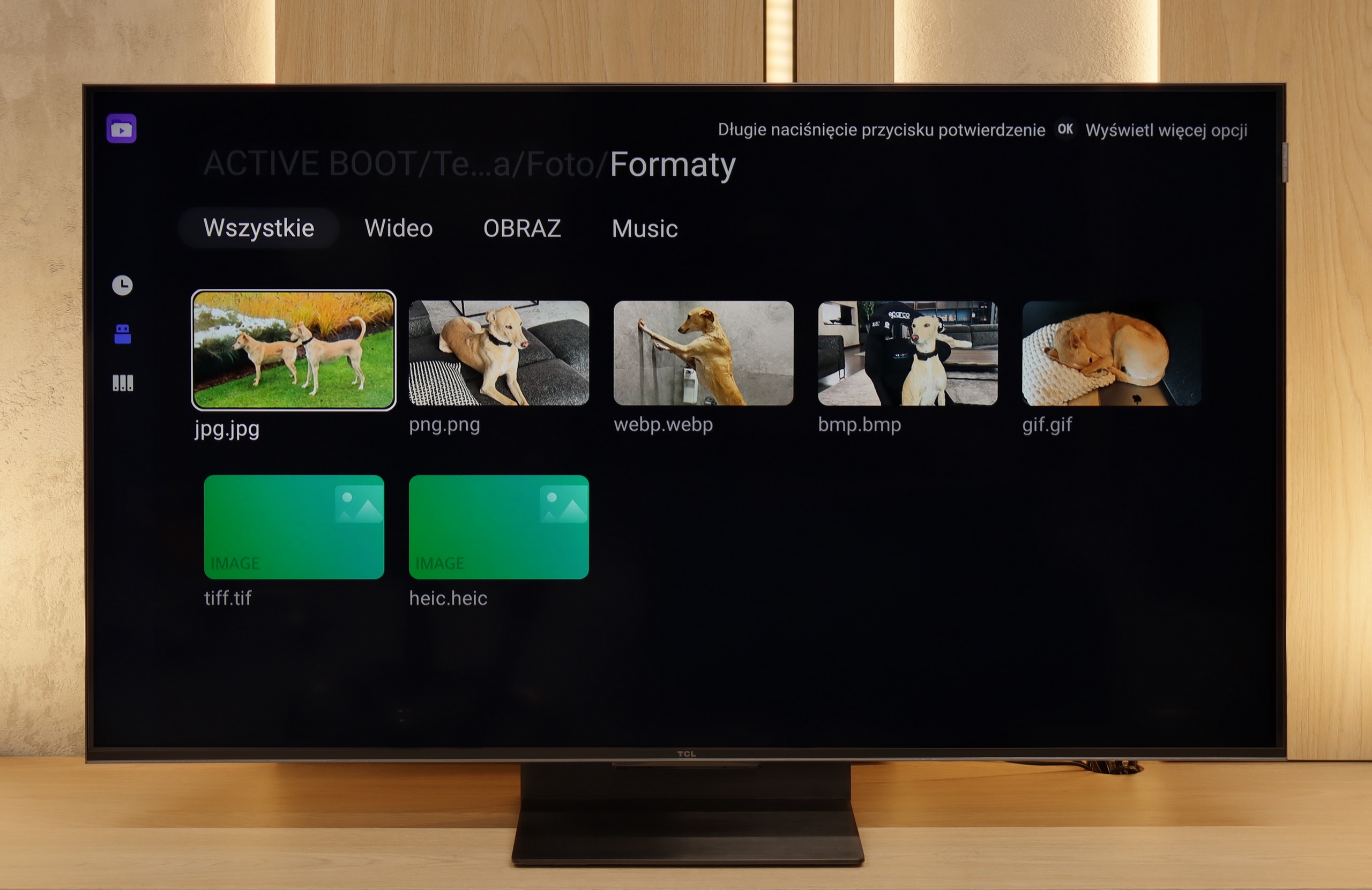
Thanks to the built-in player, the television is capable of playing most file formats available on external storage devices, making it a versatile tool for consuming multimedia. However, there may be certain limitations in the support of some formats, which can be inconvenient for more demanding users. Fortunately, the Google TV system allows for the installation of other media players from Google Play, which helps eliminate compatibility issues. This gives users the option to choose applications that best meet their needs, significantly increasing the functionality of the television.
The built-in file player in the TCL C7K performs really well. It supports most popular audio and video formats, so if we want to quickly load something from a USB drive and play it, there shouldn't be a problem. Of course, as is often the case, there can be some minor shortcomings – not every exotic codec will work (Apple's HEIC), not all subtitles will be perfectly synchronized (txt.). However, the biggest advantage of this television comes to the rescue, which is Google TV. Thanks to access to the Google Play Store, we can easily install an alternative player, such as VLC, and then no file will be a challenge for us.
Apps
9.6/10
9.6/10














































Sound
6.9/10
7.7/10
- Maximum volume--
- Dolby Digital Plus 7.1
- Dolby True HD 7.1
- Dolby Atmos in Dolby Digital Plus (JOC)
- Dolby Atmos in Dolby True HD
- DTS:X in DTS-HD MA
- DTS-HD Master Audio
The sound of the TCL MQLED85 television can be described as decent, making it sufficient for everyday viewing of movies, TV shows, and games. The speakers branded with Onkyo offer surprisingly good audio quality, and the sound does not hiss or distort even at higher volume levels.
In larger versions of the C7K (from 55 inches and up), the sound makes an even better impression than in the smallest, 50-inch variant. This is due to the greater number of built-in speakers and additional channels that provide a fuller, more spacious sound. The bass becomes clearer, dialogues gain clarity, and sound effects can truly fill the room.
It's worth mentioning the collaboration between TCL and the Bang & Olufsen brand, which appeared in the 2025 models. Even if we are not a hundred percent sure whether original drivers from the Danish company are working inside, the final effect is surprisingly positive. As far as a TV without an additional soundbar goes, the larger C7K models offer sound that can be enjoyed even during longer movie sessions.
